|
Hey there brave adventurers! It's been a little while since we've posted anything on our blog here, but we haven't forgotten you! No, High Level Games has been working hard on the creation of TTRPG content! You may have seen some of our projects like Dealing With Your Demons, The Price of Iron, A Kingdom's Edge, and all the wonderful things we have helped Clinton Boomer release on the Storytellers Vault! Well, now we are back with another wonderful project. This is a game written by Neal Litherland, called Army Men: A Game of Tactical Plastic. Army Men is a game where you take on the role of plastic soldiers fighting against the Vespoid threat! Let me tell you 5 different things that are exciting about this game. 1) The Vespoids: The Vespoids are the main adversary in Army Men. These plastic bugs are reminiscent of the bags of dollar store plastic toys your grandparents might have given you on a holiday. They are a new threat that has recently come out of seemingly nowhere and have driven the various Nations within the Plastos Federation to join together against the threat. The Vespoids are a fun nod to your childhood, but also represent a greater threat that is just waiting to come after you in the game. 2) Morale and the Battlefield: The mechanics for Army Men are really great about creating an authentic military feel. One of those key new mechanics is the morale system, which runs on a +1 to -4 scale, representing the high intensity of battle that makes things difficult and also opportunities to drive things in a good direction when the squad is really working well together. This is paired with an effective series of rules to make combat on the battlefield a little more tactical, including enhanced rules for cover and concealment, covering fire, and other things to make combat tactical, and fun to play. 3) Take It Deep, or Not:
You can take things deep, or not, based on your preference as a group. The game is designed so you can either dive deeply into the issues with a deep-seated military industrial complex, or you can play a funny game of plastic people in a largely plastic world. You can ask where did we come from? Why are we soldiers? What is this war really about? Or you can pretend you are kids again in your backyard where the bigger questions of the world just don't matter. The game is designed well for both types of play. Also, the game uses the term Men, but gender in the world of Army Men is as broad and multifaceted as it is in our real world. 4) The Plastos Federation: The Plastos Federation is the League of Nations style group that has unified the several nations of plastic people, to include Acrylica, United Polymeria, The Acetal Alliance and the Styric Republic. These nations represent a wide swath of plastic people who used to be actively at war with one another. However, the greater Vespoid threat has brought them together and now they are weathering the strange new alliance with the goal of ensuring their unified survival. Of course, all the political issues between them have not evaporated, allowing for some interesting conversations and stories around the edges of the battlefield. 5) Casts and Resins: In Army Men you can take on the role of one of 5 casts and one of 5 different resins. The casts are your character classes, Ordinance, Grunt, Medic, Scout, and Tactician. Each of these casts has a few subclasses that allow you to focus and specialize your character. Your resin refers to the color of the plastic of your person. So you can plays as a classic Green solider, or Red, Tan, Blue, or Gray. This, alongside the robust Background system allows for really varied and interesting characters from all the various Nations within the Plastos Federation. So, if any of this sounds interesting to you, you should check us out on Kickstarter! Ask anyone who can remember a few decades back and they will remind you of the beloved halcyon days of magazines dedicated to RPG’s. In today’s digital age, we are not exactly starved for content, however holding a magazine dedicated to a smaller, easy to pick-up role-playing game is something that many have missed. I have fond memories from High School reading and sharing these zines with my war gaming club. From fan made D&D or White Wolf content, to articles on how to improve your games to smaller self-contained hyper focused RPG’s, Zine such as these kept the hobby going and were a highly sought-after commodity in the convention scene. I miss conventions… ZineQuest is an annual Kickstarter initiative that seeks to promote and support content creators in creating and crowdfunding RPG zines. This is the third year of ZineQuest and like a crazed Dungeon Master, has many exiting and original zines ready to be backed, printed, and sent out to eager fans (physically or digitally) ready for something fresh to play. While I will be focusing on five zines in the campaign, please take time to look at all of ZineQuest’s offering throughout February 2021. So, you ready to see some new zines to whet your appetite? Let’s get started. 1) City of Flesh Offered to us by the dynamite team of Elizabeth Chaipraditkul and Steffie de Vaan (both icons in the RPG community and members of the Onyx Path Publishing family), City of Flesh features an utterly unique and appetizing tarot-based system. The gameplay changes with each game as you create the gothic city of Nagara and attempt to navigate the political and mystical threats players find within its walls. As much as I would love to continue gushing over the setting, what truly grabbed me was the sheer beauty of the art and layout of City of Flesh. Harkening back to classic White Wolf books mixed with the zine’s own grimdark setting the art itself it worth the small price of admission. This isn’t just the evolution of the typewriter based zines of the past, City of Flesh is an upgrade in quality and imaginative content. You can find the Kickstarter campaign for City of Flesh at https://www.kickstarter.com/projects/1568822309/city-of-flesh and I strongly recommend it. 2) Low Stakes And now for something different in all the best ways. Low Stakes is a rules light RPG setting where players take the role of various monsters (Vamps, Furrybois, ghosts, normies and mystics) and in a very sitcom like way, tread through life dealing with their roommates and the mundane world. Low Stakes creator Craig Campbell describes the methodology of the setting as inspired by the classic Vampire movie and television show What We Do in the Shadows and with that explanation, the game’s reliance on lighthearted mundane comedy shines. Although personally, I will be running this as a more undead Golden Girls setting. The art that we have seen from Low Stakes is likewise beautifully cartoonish and evocative of its light tone and setting. This will definitely appeal to fans of Ravenloft and White Wolf games. Check out Low stakes at https://www.kickstarter.com/projects/1582756696/low-stakes 3)Mage to Order An ironic look at a society of Mages, Mage to Order puts players in the role of magical maintenance workers in the technomantic city of Thelema. Putting an emphasis upon those most frequently taken for granted in society, your workers fix, clean, and work hard for their city even if they are frequently unthought of and underappreciated. Mage to Orders’ creators, Drowning Moon Studios designed an easy to learn D6 system for this game and along with a compelling setting is worth a look. You may find the campaign for Mage to Order at https://www.kickstarter.com/projects/drowningmoonstudios/mage-to-order-zinequest 4) Choose Your Own Skills Creator Kenna May brings forth a new way for Dungeon & Dragons players and DM’S to streamline and customize skill checks. With an emphasis on enriching storytelling and removing lengthy barriers on rolls which often bog down games, Choose-your-own Skills offers a new tool to keep everyone invested in the game and deepen your story by exploring why your PC has some of the abilities they do. While being a shorter 12-page zine, Choose-your-own Skills promotes their hack as a time saver and I for one can get on board. You may find the campaign for Choose-your-own skills at https://www.kickstarter.com/projects/772191679/choose-your-own-skills 5) A Tangled Web Vol 1 Creator Benjamin McCown seeks to take your NPC’s and connect them together via relationships, intrigue and story hooks that will enrich your games. A Tangled Web Vol 1 gives DM’s quick and easy charts that allow them to bring these often-neglected NPC’s to life.
The art for this zine is created by McCown and Christian Stryffeler and it really stands out as a stark and gothic representation of what one can expect from this zine. While McCown has stated that Vol 1 features only city content, he has said that more is on its way and I for one am looking forward to that. Follow the life to find out more, https://www.kickstarter.com/projects/benmccown/a-tangled-web-vol-1-zinequest-3 With that being said, this is just a taste of what ZineQuest 3 has to offer, check them out and if you have the ability, please support these and other creators. I, for one, will start planning for my own zine submission for next year….after all, don’t we need more mutant dinosaurs in our games? Michael Jacobson is a freelance writer and a US Sailor. His work has been featured in products like Snowhaven 2nd Ed, Night Horrors: Shunned by the Moon and more coming thru the pipes. When he isn’t running games, running in general and drinking Dr.Pepper he can be found fanboying out about Dinosaurs, Star Wars and turtle of both normal and the Ninja Mutant variety. With the dual launch of the first novel and RPG for Questlings - A Children's Book Series and RPG Adventure, I was excited to schedule an interview with the game designers, Banana Chan and Tim Devine, as well as the author, Dan Letzring, about these two products. I’ve interviewed Banana Chan at High Level Games and reviewed Tim Devine’s North Sea Epilogues at d20 Radio, so I was eager to learn more about this all-ages franchise. EGG EMBRY (EGG): Thanks for talking with me. What is Questlings - A Children's Book Series and RPG Adventure? DAN LETZRING (DAN): The stories and RPG are all about finding your inner hero. In the So You Want To Be A... series of children’s books, the characters find themselves looking at what they aspire to be without realizing that they may already embody the ideals of those to whom they look up. Each story is a heartwarming tale that sees our characters on journeys that involve friendship, heart, and being true to oneself. BANANA CHAN (BANANA): Questlings is a tabletop RPG that’s based on that series of kids’ books! The players take on the roles of kids who are trying to accomplish their goals by gathering items. When they get to a challenge, they call upon their Inner Hero for help, just like the book series. TIM DEVINE (TIM): Questlings, the RPG is a great introduction to new players and new GMs and a fun way to get the family together to create amazing stories. EGG: For the RPG, how does the system work? BANANA: The RPG uses a map and each location has two sides to them, just like the characters have a reality version and a fantasy version. When a difficult challenge happens, the location turns into its fantasy version and that’s when the kids become their Inner Hero. The Game Moderator uses a storybook full of prompts to read through that will guide them through the map. It’s heavily inspired by Choose Your Own Path systems, so newer GMs can get a handle of how to moderate the game. TIM: All of the information a player needs to play is right on their character sheet, in an accessible and kid-friendly way. When the GM asks for a dice roll, players will roll one six-sided die if they are their kid, or one eight-sided die if they are their Inner Hero. The outcomes are narrated by the player and GM together. The sheet also has a place to track Boosts, which are a cool resource that players earn when they roll low and things don’t go their way. Boosts can be used later on to re-roll dice, move more than one space or bargain with the GM. Questlings has safety rules built right into the character sheet, with three face icons; green, yellow and red, which players can tap to indicate if they are really enjoying something, would rather not keep talking about something or simply remove something from the story. Teaching kids this way of playing really empowers them and makes for a much better experience for everyone. EGG: What’s character creation like? Are the main characters from the book playable within the game? BANANA: There are 6 different pregenerated characters that the players can choose from (these are the characters from the books), but players can definitely make their own if they want to! We have a blank sheet for players to draw and fill out. TIM: Players can really make their characters their own, even if using the pregens, however they imagine their character or Inner Hero. As they describe their actions and how they face challenges, they can be totally unique. Players will give their character and Inner Hero names and assign stars to their three stats; Creativity, Determination and Problem Solving. Finally each character will need a goal, or the thing they are trying to accomplish by the end of the game. EGG: Questlings is a series of kids books created by Bryce O'Connor, Nicholas Yu, and Dan Letzring with illustrations by Jacqui Davis, correct? You’re launching with the first book (of six) and the RPG, why kickstart the first novel and the RPG at the same time? DAN: We were originally going to release the first two kids books together. However we decided that since these are RPG inspired stories it would be a lot of fun to launch the first book with an RPG set in this IP. Once we really thought about that idea it seemed smart to be able to hit multiple age ranges and audiences within the same campaign! If all goes well we will plan to launch each kids book one at a time paired with RPG supplemental material. EGG: What age range are the books and RPG for? DAN: The kids books are targeted to ages 3-7 and the RPG is for ages 8+ (though suitable for younger). BANANA: I’ve played this with adults and they also seem to enjoy it, so it might be good for new roleplayers as well as a gateway game, before they get into something crunchier! EGG: How long is each book? How many pages will the RPG be? Will these fulfill and deliver together? DAN: The children’s books are 32 fully illustrated pages and the RPG is still in process but is expected to be around 40-50 pages. BANANA: We just keep adding more and more pages to the RPG! I’m thinking we’ll have more supplemental stuff for the next Kickstarter. EGG: While the content points towards an RPG, what was the catalyst to actually create that game? DAN: Banana and I had met years ago and had run into each other again at PAXU last year. I approached her about making an RPG set in the world of one of my previously published games, Groves. Both of us were not all in on this project for a multitude of reasons and while casually taking I mentioned the Questlings line of books. This sparked a fire in the creation process and we had a solid plan for the RPG quickly. Banana then went to work making something truly special. She then recommended bringing Tim in on the project and I must say that it has all come together better than I hoped. BANANA: It really is a really great team! Initially when Dan reached out to me, I had an idea of what to do and I did a quick brainstorm with Mabel Harper, who has experience with planning out TTRPG adventures and I wanted to get her take, before putting anything on paper. Once I had a good understanding of what the world look like and how to make it accessible, I did a first draft. I had a chance to playtest it a few times with adults (parents), but when things started moving to a digital sphere, I needed to bring on someone else. Tim has kids at home so he can continuously playtest with them. TIM: Having played and designed RPGs for my son since he was 3 years old, I was delighted when Banana approached me about joining the project. I’ve enjoyed playtesting and running this game through it’s iterations and seeing the joy on the faces of the kids and adults playing. EGG: What stretch goals are you hoping to unlock? DAN: Additional prompts and materials to supplement the RPG as well as additional art within the RPG booklet! BANANA: We’ll also have a pledge level for backers to play with streamers! Lysa Penrose and Gabe Hicks are the two streamers who we have the pleasure of having on the project as guest GMs. EGG: Beyond this project, what else are you working on? TIM: My partner and I have a long format campaign adventure coming out soon with Hunters Entertainment and Renegade Games for the Teens in Space RPG. We also have some awesome RPG podcasts over at the Roll to Play Network! BANANA: I’m working on a TTRPG with the podcast Crypto-Z! It’s a game about the world after climate change has destroyed everything and cryptids roam the earth. We’re expecting to launch that sometime in 2021. I’m also working on a few things with Austin Knight, Sen-Foong Lim, Sadia Bies and Jason Slingerland that are in the works! DAN: We have been working on two lines of games. One is Adventure Tactics, a campaign based encounter driven miniatures TTRPG inspired by Final Fantasy Tactics. The game is releasing early next year and we have a lot of expansion content in the works. We also just released a standalone expansion to our 18-card game Squire for Hire as well as a digital app of the game. We are working on more 18 card games both related to squire for hire as well as separate. EGG: I appreciate you talking with me. Where can fans learn more about your work? TIM: I am half of Dice Up Games [website here] and [a third] of the founding members of the Roll to Play Podcast Network. You can find me on Twitter @GMTimD. BANANA: Game and a Curry’s website is [here] and you can find us on Twitter and Facebook @gameandacurry. As for me, you can find me on Twitter and Instagram at @bananachangames! DAN: Our website is [here] and I am on Twitter, Facebook, and Instagram at @letimangames Questlings - A Children's Book Series and RPG Adventure! from Letiman Games and Game and a Curry End Date: Thu, December 10 2020 10:00 PM EST. “Questlings is an RPG-inspired children's book series and RPG game system about finding your Inner Hero.” Egg Embry is a freelance tabletop roleplaying game journalist writing for EN World, Knights of the Dinner Table, RPG News, d20 Radio, the Tessera Guild, the Open Gaming Network, the AetherCon Convention Magazine, GAMA’s Around the Table, and more. His areas of focus are RPG crowdfunding projects and RPG reviews as well as interviews with a range of gaming professionals from freelancers to CEOs. Beyond journalism, he dabbles in freelance writing and producing gaming zines for the roleplaying zine-aissance, including POWERED by the DREAMR, a Powered by the Apocalypse RPG zine about living out your dreams within other’s dreams. Lynne Hardy, Associate Editor for Call of Cthulhu and Line Editor for the Rivers of London RPG at Chaosium, has a new campaign setting coming, The Children of Fear for Call of Cthulhu. Over the years, I’ve spoken with Michael O’Brien at Chaosium about the HeroQuest trademark, his thoughts on the Alliance shutdown, the upcoming Rivers of London RPG, and more. With The Children of Fear, I get to discuss the project with the creator and associate editor to learn how much work goes into creating a 400+ page campaign setting. EGG EMBRY (EGG): I appreciate you taking the time to talk with me. At Chaosium, you wear several hats, but the first one I’d like to discuss is that of author of The Children of Fear. What can you share about the latest tome for Call of Cthulhu? LYNNE HARDY (LYNNE): Set in 1923/24, it’s a large campaign spanning parts of China, Central Asia, Northern India, and Tibet. Although primarily written for Classic Call of Cthulhu, we’ve done what we did for Masks of Nyarlathotep and included Pulp Cthulhu stats blocks for major NPCs, along with suggestions on how to tweak the campaign if you’d prefer a more Indiana Jones-style game. It’s intended to be player-led, so they get to choose the path their investigators take through the story’s central core. We’ve also made it scalable in terms of the degree of Mythos content--ranging all the way from the Outer Gods down to a more low-key, occult-focused version; that way, the Keeper can tailor the campaign to their own group’s particular likes and dislikes. EGG: What kind of twists should players expect? What can you reveal about the larger evil they’ll face? LYNNE: It’s fun to keep the players and their investigators guessing so there are definitely some twists and turns, but I can’t really reveal too much about them or the larger evil the investigators face as it might spoil things. Let’s just say that it’s all to do with a terrifying individual known as the King of Fear and the schemes of his followers. EGG: 416 pages stretching across 1920s Asia, what inspired this project? LYNNE: Many things. Initially, research I’d done for a previous campaign but hadn’t used and a conversation with Jeff Richards at Gen Con in 2015. Delving into my old notes and doing more background reading so I could present a fleshed-out pitch to Chaosium actually led me away from what I thought the campaign might be. The research kept bringing up a couple of specific topics, including the places visited by the monk Xuanzang in his epic quest across the region (immortalized in Journey to the West), so I decided to stop fighting it and go where it was leading me. The Monkey TV show was huge in Britain when I was a child, so it was fun to learn more about the monk behind the legends and use his journey as the basis for the one the investigators will take. EGG: With the 1920s Asia setting, what steps did Chaosium take to insure this book is culturally sensitive? LYNNE: First, a lot of research, but that can only take you so far. From the outset, I was very mindful of cultural and religious sensitivities, and hopefully our work with a multicultural team of play testers and consultants during the various phases of development has helped us address that. Two ordained Vajrayana Buddhists offered their assistance after reading about the campaign on social media, and as the campaign features many elements of Tantric Buddhism, their feedback was much appreciated. They checked the manuscript for me and corrected me where I’d misunderstood a term or concept, so the material is as accurate and respectful as it can be. EGG: That is excellent news and I appreciate you going the extra mile with that. The cover states the book is by “Lynne Hardy and Friends”. I love that, it sounds like your band or a group of superheroes. In this case, who are the “Friends”? LYNNE: Everyone who helped bring the finished book into the world: all the artists, cartographers, play testers, editors, and consultants, plus members of the Chaosium team. While I am its author, books like these rely on a host of incredibly talented people--in this case, from all across the world--often working completely behind the scenes. We couldn’t get everyone’s name on the front cover, but I wanted to acknowledge that without their hard work, The Children of Fear wouldn’t exist. EGG: The Children of Fear was announced over four years ago and is just about to come out. As Associate Editor, Call of Cthulhu, was that a long development cycle? Are there any learning moments that you can share from this project? LYNNE: It was a long one, yes! Book development is an odd thing--some books come through the pipeline quite quickly, others take longer for a whole variety of reasons. When I began The Children of Fear, I was a freelancer; financially, I couldn’t afford to devote all of my time to it, so it chugged along in between other writing and editing projects for various companies. I’d almost completed the first draft when Mike [Mason] asked me to work on Masks of Nyarlathotep. Chances like that tend to come along once in your career, and while I wanted to get my campaign finished, I knew I’d be missing an important opportunity if I turned Masks down, so Children went on hold. Masks took a couple of years to get right, and it took a little while to get back up to speed with Children after that and finish the raw document. Besides being checked by our Buddhist consultants, the campaign also went into playtesting with multiple groups to make sure it worked and their feedback from the various different stages of testing was then worked back into the text and additional material written where required. You also need a lot of art and maps for a book this big, and that all takes time to commission and approve. Then the book needed to be edited and proofed. Again, a large, complex campaign like this takes time to check and correct. In amongst all of that, I was taken on full-time by Chaosium as Associate Editor on Call of Cthulhu. We have many books in different stages of development and production for the line at any given time, so The Children of Fear had to slot into place with those others and wait its turn in the queue. As you can imagine, it’s also taken a while to lay it out and proof the pdf. Thanks to Nick [Nacario] and our artists and cartographers, it’s a lovely thing to look at. Hopefully people will get as much enjoyment from reading and playing it as they will looking at it. One of the main things I learned on this project was not to be stingy with the amount of art you need for a book like this. I was a tad over conservative in my original estimates, but it all turned out okay in the end! The other learning moment was that, after writing two of these massive campaigns on my own now, I don’t feel the need to do another one any time soon. EGG: I laughed when I read that last bit! I can only imagine. Keeping with your Associate Editor hat, what other projects are you guiding for Chaosium? LYNNE: I’m currently editing A Time to Harvest, which was the Call of Cthulhu Organized Play campaign in 2016. It’s being updated and given all new artwork and maps ready for a full release. A new solo adventure, Alone Against the Tide, is just about to go into layout, and I have several other projects which haven’t been announced yet that I’m helping to develop, edit, and commission art and maps for. EGG: Switching hats, you’re also the Line Editor, Rivers of London RPG, correct? I spoke to Michael O’Brien about that license when it was announced and, more recently, you spoke with Charles Dunwoody about the game. Are there any updates that you can share about the RPG? LYNNE: I am! Several chapters of the book are pretty much complete and ready to go into editing. The rules are currently out for the first round of external playtesting and we’re getting some very useful feedback from our testers that’s helping us to refine the system so it best supports telling stories in Ben [Aaronovitch’s] wonderful world. I’m also about to start approaching artists and graphic designers so we can begin developing the book’s style and design. EGG: Beyond Chaosium, you’re the designer of the ENnie-nominated steampunk RPG, Cogs, Cakes & Swordsticks. Are you planning to revisit that game in the future? LYNNE: I would dearly love to but, for the moment, Cthulhu and the Folly have me fully occupied. I had been about to start on a US and Canada sourcebook for the game, along with a small campaign, when I started working for Chaosium as a freelancer. As with all small, personal projects, if it comes down to working on that with no guarantee of financial return or taking on a job with a firm pay cheque at the end of it, the reality is you go for the one you know is going to pay you. I do still run Cogs at conventions, and it’s always a great deal of fun to do. So, you never know--one day… EGG: Thank you for talking with me. For fans that want to pick up The Children of Fear and your other work Chaosium, where can they go? LYNNE: The PDF for The Children of Fear will be released first on the Chaosium website; like our other games and supplements, it should also then be available on DriveThruRPG. The advantage of buying the pdf direct from us is that you then get the cost of it off the print version, should you decide to purchase that as well. Usually, print copies of our books arrive 2–3 months after their electronic release and will be available from our website and your Friendly Local Games Store. The Children of Fear from Chaosium “A Campaign Across Asia For The World’s Best Horror Game! A mysterious telegram plunges the investigators into an epic journey of intrigue and horror.” Egg Embry is a freelance tabletop roleplaying game journalist writing for EN World, Knights of the Dinner Table, RPG News, d20 Radio, the Tessera Guild, the Open Gaming Network, the AetherCon Convention Magazine, GAMA’s Around the Table, and more. His areas of focus are RPG crowdfunding projects and RPG reviews as well as interviews with a range of gaming professionals from freelancers to CEOs. Beyond journalism, he dabbles in freelance writing and producing gaming zines for the roleplaying zine-aissance, including POWERED by the DREAMR, a Powered by the Apocalypse RPG zine about living out your dreams within other’s dreams. The Year Zero Engine (YZE), the award-winning system behind Free League Publishing’s ALIEN RPG, Tales from the Loop, Coriolis, Forbidden Lands, and more, speaks to me as a creator and fan. I backed the Forbidden Lands RPG Kickstarter to get their Open Gaming License (OGL), and I wasn’t the only one. Enter Michael Prescott, the creator behind Trilemma Adventures, and his latest Kickstarter, Trilemma Adventures: The Servants of Memory, creating a bestiary using the Year Zero Engine OGL to give more monsters for your fantasy YZE RPGs. EGG EMBRY (EGG): Thank you for making time to talk with me. Can you tell me about your Kickstarter, Trilemma Adventures: The Servants of Memory? MICHAEL PRESCOTT (MICHAEL): Sure! It’s a bestiary of creatures for fantasy RPGs based on the Year Zero Engine, with stats for 117 of the creatures from the Trilemma Adventures series. The stats by lead designer Craig Atkins, along with help from Doug Ruff, Reilly Heijkoop-Logan, and Simon Bokvist. Last year I published the Trilemma Adventures Compendium Vol I, which just won gold and silver ENnies for best cartography and best adventure. The adventure sites are system neutral, which makes them easier to run in really lightweight systems, but we’ve been busy publishing bestiaries to adapt them to other games that are a little crunchier. We’ve covered 5e, B/X, and Dungeon World, and Servants of Memory is the Year Zero Engine edition. You can of course use Servants of Memory to play the Trilemma Adventure sites, but it’s a handy book on its own to add variety to the creatures you throw at your players. We smashed through all of our stretch goals in short order, so the book will also have encounter tables for a whole variety of terrain types, new spells for Dradkin chimeromancers to use, and stats for some of the cooler magic items mentioned in the compendium. EGG: What system is this for? MICHAEL: It’s for fantasy RPGs based on the Year Zero Engine. As you may know, the terms of the OGL prohibit us being more specific! EGG: Will this act as a bestiary for Forbidden Lands specifically, or any Year Zero Engine powered RPG? MICHAEL: It definitely works best with YZE fantasy RPGs: not all Year Zero Engine games have quite the same rules. Some of the games are quite close, mechanically, while others are a little further away. In fact, the Twilight: 2000 game apparently gets rid of dice pools entirely in favor of paired polyhedrals. A big feature of the book, however, is the random table of creature special attacks for combat. Craig has done up more than half of the creatures with a table like this, which adds variety to how monsters act in combat regardless of the system. EGG: You’ve been successful with Trilemma Adventures projects for 5e, B/X, and system neutral offerings, why jump to a new-to-Trilemma system? MICHAEL: The roots of the project lie with Craig Atkins, actually. He’s been a big fan of YZE games for years now, having done many monster conversions already. Daniel Tobin got him started converting the Trilemma bestiary creatures over, as fan project. Daniel had to bow out before things really got started, but Craig picked up the banner and ran with it, and brought on the other contributors. By the time he reached out to me, they had done a ton of work already. EGG: How did this project come about? What made you decide to create this bestiary? MICHAEL: The decision to publish as a proper book had a few factors. When Craig contacted me, I was just wrapping up the B/X and Dungeon World versions of the bestiaries, so all the pieces were already laid out on the workbench already, so to speak. The decision to launch it on Kickstarter actually came a bit later, as we were approaching the first draft being complete. Running a Kickstarter is a pile of work, but it also has a big effect on sales, something I could see by contrasting the sales of my Kickstarted compendium and the three straight-to-DriveThruRPG bestiaries that followed it. It was something of an experiment to understand the impact of a measured Kickstarter that didn’t run me into the ground! But really, while there is some great content for the Year Zero Engine, there isn’t yet a solid fantasy bestiary, so this seemed like a no-brainer project to bring to the game. EGG: On the Kickstarter page, you have a good group of creators. Most of the bios point out that they play Year Zero Engine RPGs. When putting together the team for this, was being a YZE fan a prerequisite? MICHAEL: That’s an effect of how the team was found, by putting out the word in YZE online spaces... but yes, familiarity with YZE and how it flows in play is really crucial in adapting creatures to it. EGG: As far as I know, this is the first major use of the Year Zero Engine OGL. Did you talk with Free League before creating this, or did you take the approach any company would with any other OGL and make great products on your own? MICHAEL: Craig is a regular in the Year Zero community, and he put us in touch with Free League quite early on. We let them know we wanted to make a fantasy bestiary, and they were quite supportive. Using the OGL was a decision we made well into the project. There are a lot of details to work out in any situation where you’re working with someone else’s brand, and using the OGL has the advantage that the expectations are all laid out in black and white. It’s a solid core and we’re really happy with the results. EGG: Are you thinking of creating more YZE content after this? MICHAEL: Craig is unstoppable, I gather he’s already assembled a team to produce stats for a book of rarities and magic! EGG: Beyond this project, what else are you working on? MICHAEL: I have a number of smaller games brewing. In particular, I’m dying for a chance to do some revising of Too Good to be True, a quick-play [Powered by the Apocalypse] game about mecha mercenaries. But of course I have more fantasy adventure sites coming up. The next one will be a take on the classic troll bridge, featuring the “marooned soldier” style ogre from the bestiary. That’s part of the long, uphill climb towards compendium volume 2! EGG: Thanks for taking the time to speak with me. Where can fans follow your work at? MICHAEL: Any time! If you want to follow Craig and all his YZE shenanigans, head over to his blog. For me, the best place is my site and blog on Twitter as @fuseboy - but of course, please make your first stop the Kickstarter for Servants of Memory! Trilemma Adventures: The Servants of Memory from Trilemma Adventures End Date: Tue, September 1 2020 3:00 PM EDT. “A bestiary of fantasy monsters for the Year Zero Engine.” Egg Embry is a freelance tabletop roleplaying game journalist writing for EN World, Knights of the Dinner Table, RPG News, d20 Radio, the Tessera Guild, the Open Gaming Network, the AetherCon Convention Magazine, GAMA’s Around the Table, and more. His areas of focus are RPG crowdfunding projects and RPG reviews as well as interviews with a range of gaming professionals from freelancers to CEOs. Beyond journalism, he dabbles in freelance writing and producing gaming zines for the roleplaying zine-aissance, including POWERED by the DREAMR, a Powered by the Apocalypse RPG zine about living out your dreams within other’s dreams. “The Titanodon are coming, prepare defensive posture” Elisa clutched the handle of her rifle and felt the gentle content hum of her Media armor. This was her first sortie as a Probatus of the glorious Guardia Adamantis, Holy Rome herself, and she swore to herself that she wouldn’t be found wanting. Silently assessing the situation, the Praetorian prepared herself for the obvious next command. “Ready Rifles” She raised her weapon and steadied it on top of the shield raised by her fellow Praetorian, a hulking brute in Heavy armor named Matteo. The small group of Soldiers huddled together in their makeshift turtle posture and waited for their commander to give them the next orders. Matteo’s armour was a shining bronze cut with red filigree signifying his rank as a Triarius. Attempting to steady her gun, Elisa fount the giant metal shield of Matteo was shaking. “Matteo.” the Probatus asked her defender. “are you trembling? You will throw off my shot with your fear.” “Not fear.” the giant answered, his vocal augmenter growled. “It’s anticipation.” Their commander unsheathed her pistol and sword and shouted to her Praetorians. “Take Aim” Elisa centered her sights on a large reptilian brute running towards her position. Its body was a rush of red and grey scales and the only thing in focus was its oversized maw full of sharp teeth, red with fresh blood from kill. Red from the blood of one of Rome’s citizens. She pulled the butt of the weapon to her shoulder and gritted her teeth. “Do me a favor cadet.” Matteo grumbled. “What's that?” Elisa asked “Leave a few for me to kill” Matteo readied his spear for the oncoming alien charge. “Fire!!!” Augusta Universalis is a game created by Luca De Marini that takes place in an alternate history where the Roman Empire conquered the Earth and its people and where they ushered in a spacefaring culture that spans throughout our solar system and beyond. It’s a strong mix of grim dark science fiction and classical roman aesthetics with modern-day nods and call backs that are both creative and thought provoking. Like many alternative history settings, Augusta Universalis demands players suspend their belief and pick up blaster and sword to protect the Empire, all while wearing power armor. Roman legionaries in Power Armor fighting Dinosaur Aliens and Nazi’s on Mars, got it? Great, let's move on. Here are 4 reason why you should play Augusta Universalis. 1) The story To say that the setting of Augusta Universalis is dense is somewhat of an understatement to be completely clear. This isn't a bad thing depending upon what you want from an RPG setting, I myself adore a setting that is rich and deep with lore and history (just look at my collection of White Wolf games for proof). However, for new narrators and players this can be an hurdle. This game features a lot of unfamiliar terms to most players. If attempting to run this game with new players a strong session 0 where everyone learns about the setting and collectively builds their Praetorians is strongly advised. The setting features an interstellar Roman Empire that has (mostly) united and absorbed the rest of humanity and is defiantly capable of playing to different genres. The game describes it’s setting as “ Unchronia” or Roman Punk. You can be stationed in Holy Rome herself, protecting the Imperial Senate form threats both political and militaristic, out upon the sands and ring cities of red Mars beating up Nazis, or exploring the boarders of our solar system. The variety the game offers is impressive. It reads as a love letter to both world history and science fiction and I dig it. 2) The Rules Augusta Universali’s system is run on the Dark Destiny 2 engine, a quick paced system that involves the player in the narrative right along with the narrator, creating a wonderful layer of multifaceted storytelling which is striking. Players are rewarded for adding to the narrative, so your game feels more like a collective story than a singular narrative driven by one party. Utilizing basic questions of what, why, and how, this system strips the mechanics down into easy and quick actions letting the story move at a brisk pace. While I am still experimenting with the Dark Destiny 2 system, I am impressed and intrigued with ways to utilize some of its mechanics. 3) NPC’s and Foes While the story is engaging, I find myself crazily drawn to the Beastarium and the utterly unique foes that your Praetorians are pitted against. Featuring spacecraft and transports, political dissidents and aliens, the Beastarium is chock full of great antagonists despite is small size. From Martian Nazis (yup you can punch a Nazi in this game. It’s fun. I recommend it, 5 stars), interstellar Dinosaur men with laser (speaking my language), rebels, mad max style techno barbarians and alien ooze monsters… there is a lot to enjoy here. Hopefully they keep this growing in future expansions (and give us more reasons to punch Nazis). 4. The Art This book is stunning. The artwork done by Fabio Porfidia and Gaetano Carlucci ranges from the more classical roman aesthetic to Science Fiction elements and really manages to merge them well. This merging allows readers and players to buy into the setting quickly and sets the stage for storytelling in a way that would have been more daunting without it. The many different character options are beautifully rendered and explained through the art. Higher than most of the books in my collection, Augusta Univeralis benefits greatly from its artwork and is another fine example of how words and artwork can push a product forward into greatness. The art is worth the price of admission alone. All in all, Augusta Univeralis is a unique and clever game and it definitely deserves a place on your bookshelf and countless hours on your table. You can get your copy of Augusta Univeralis here.
Per aspera ad astra, my fellow Praetorians. Michael Jacobson is a freelance writer and an Active Duty US Sailor. His work has been featured in products like Snowhaven 2nd Ed, Night Horrors: Shunned by the Moon and more coming thru the pipes. When he isn’t running games, running in general and drinking Dr.Pepper he can be found fanboying out about Dinosaurs, Star Wars and turtle of both normal and the Ninja Mutant variety. It is once again the time of year where there’s snow on the ground and a nip in the air. It is also the time of year where I start making more and more of my classic characters. Well, that was a lie. I just happened to think about the cold and how hard it was for one of my players to build a cold-based Druid in 5e and I got thinking about the rather lacking representation of elemental based spells these days. So, here’s me thinking of ways to not just add more spells to the game based around elemental magics, but also ways to convey the raw power and beautiful nature of these potent forces in your games.
1) More Spells The obvious answer. Want to make the world have more elemental magic in your game? Add more elemental magic in your games. There are hundreds if not thousands of homebrew spells out there on the internet. Sure you’ll likely have to sift through a great deal of underpowered and overpowered material. Some of it will be so specific that you’ll know it was meant for just one character out there. But I have found some genuinely interesting and creative elemental spells out there. However, if that’s not your speed, I came up with a creative - if not obvious - solution to this awhile ago. Just swap the damage types and descriptions of certain spells. Take Scorching Ray and make Shocking Ray and Frosty Ray. Make them their own spells (just to clarify, I mean if you know Scorching Ray, you can’t just go and cast Shocking Ray instead.) They’re their own separate spells with similar mechanics and different damage types. Sure, it’s a little boring and on the head, but it makes it easy and it makes sure it’s balanced. Another idea that I will always stand beside is ripping someone off. In this particular instance, video games. RPG’s have a large variety of spells. Obviously. Some of them are classics we’ll all know such as a fireball. However, the Dragon Quest series has a great deal of elemental spells to look at. Crack (as well as its more powerful variants Crackle and Kacrackle) are an excellent example. In short, the spell shoots a massive icicle up from the ground to stab an enemy (or group of enemies). It’s cool. It’s simple. It’s easy to understand. And there’s a whole lotta room to do something interesting with it. 2) Elemental Creatures Now, let me explain. I don’t just mean making/adding more elemental creatures to the game. I mean making them interact with everything more often. Elementals working docks in cities, or forges, or as the winds that push sails forward. Small elementals that exist to create random acts of nature, that you would never guess weren’t natural, like stepping into a puddle or the wind blowing away an important document. Hell, even consider that perhaps normal animals that get shunted off into an elemental plane could come back with strange mutations. Like an elk with antlers made of solid stone. I’m of the opinion that the themes created by elemental imagery of terrible storms, volcanos, tsunamis and the likes are harsh renditions of elementals as portrayed in many TTRPG’s. I think there should be more benevolent elemental creatures. The only ones I can really think of off the top of my head are Djinni and kind of the Azer. Gentle fire elementals that come close to campfires and warm people in the cold winter nights. Shy earth elementals that gift small gems and other nick nacks they find underground to people who are suffering. I understand that in essence Elementals are raw representations of the energies that exist in our world, but while our world is violent and untameable, there are places of serene beauty, and I feel elementals should reflect that. 3) Influence in Your World A massive open field with an ocean of grass and a single fifty-foot area of blackened grass, permanently scorched by the very essence of fire. A village with random and steep elevations, some of the buildings are ruined, others are simply raised up into the air by massive pillars of displaced stone. A river that occasionally floats up above the old riverbed, flowing through the air enchanted by an old water elemental who was simply enjoying itself. The elements are frightening, fascinating and fantastic all at once. But above all - in most TTRPG’s they’re inherently magical. Their influence in your world can be shown in a hundred thousand different ways. Some less subtle than others. Everything from the ground your players walk on to their air they breathe, to the fire they cook with are all things that can be controlled or influenced by random elemental forces. Show the connections the things we do every day have with the elements. Another, perhaps less subtle route to giving elemental forces some influence in your world would be putting powerful elementals into the world. Have a kingdom that was recently usurped by a genie suddenly cease all violent actions against other kingdoms, arousing simultaneous relief and suspicion. Maybe there was a city that has nearly been completely devoured by Xorns or some other rock-eating creature. The obvious followup question, after situations like these, have been handled is “where did they come from?” This paragraph presents ideas very similar to the last bullet on this list but please understand that I have been creatively bankrupt since I was born. 4) Natural vs Elemental Magic This is less of a way to add elemental influence and more of a food for thought section. But I’m going to type this out anyway. I’ve always thought that (in D&D in particular) a lot of games draw a strange line between “Nature” and “Elements.” I suppose you could argue that nature as we see it is an intermingling of all the elements and from this intermingling, there is a delicate equilibrium created between the raw chaos of the basic elements and the more gentle chaos of the wild and natural world. Counterpoint: that’s stupid. Nature magic and Elemental magic (at least from my perspective) should be far closer together in their use. After all, people favoured by nature, like druids, are already able to control the elements. Surely, you could find spaces where earth elementals and Ents are living together in quiet harmony. Really, the only blatantly destructive elementals are fire elementals. At least in the way where they simply stand still and completely destroy a house. Elementals have a place in the natural world is really what I’m trying to get at, and keeping that in mind opens up a pretty big world of opportunity in regards to adding them to your games. 5) Artifacts Yes, they’re overpowered. Yes, they’re overused. Yes, it’s a little underwhelming from a storytelling perspective. But I’ll be damned if having some silly MacGuffin that legally makes you the King of the elemental plane of fire kicking around somewhere in your world isn’t a novel concept. Creating artifacts is a good way to get your homebrew and world-building juices flowing. Partially because there are so many questions to ask yourself during the process. Partially because being creative opens up the door to continue being creative. Mostly because making interesting and earthshattering objects of power that your players may only ever get the chance to use once is just incredibly fun. A hammer made by an Azer for an Efreeti Noble that has the power to instantly melt steel, lob giant balls of molten metal and force magma up from the earth, but it can only be used by someone pure of heart and devoted to the God of the Sun. It’s an interesting thought. Why these powers? Why did the smith make it but make it so the one who commissioned it couldn’t use it? Where is it now? What has it been used for before? All important questions. Our world is full of places that seem extreme. Extremely hot, extremely dirty, extremely deep, extremely isolated. And if there’s one place you’re going to find adventurers, it’s in some of the most extreme places in the world. As such, when it comes to adding elementals and their influence into your game, I think it’s best to go to the extremes. And while we’re on the topic of elemental effects of your setting, I’ll take this opportunity to mention Snowhaven. The new setting we at High Level Games have published. I actually did a little bit of work on this setting, and I know everyone at High Level Games would appreciate it if you just even took the time to look at the preview. Jarod Lalonde is a young roleplayer and writer whose passion for both lead him here. He’s often sarcastic and has a +5 to insult. Dungeons and Dragons is his favorite platform. Although he’s not quite sure if it’s Cthulhu whispering to him in the small hours of the night, or just persistent flashbacks to the Far Realm. When the opportunity to speak to Banana Chan (Flatline, Terror Below, Warp’s Edge, and Betrayal at Mystery Mansion) and Sen-Foong Lim (Kids on Bikes, Never Going Home, Gears of Defiance, and The North Sea Epilogues) about their latest tabletop roleplaying game, Jiangshi: Blood in the Banquet Hall, I jumped at the chance. They share details about the game, what elements from board games they pulled into this project, and how all gamers can come together at the gaming table regardless of race.
EGG EMBRY (EGG): I’ve reviewed projects you’ve freelanced for, talked to your publishing partner, Wet Ink Games, at various points (here, here, and here), and planned to attend MomoCon 2020 with them before it was cancelled. We’ve been Facebook friends for some time and I’ve wanted to talk to each of you about your design philosophy. Your latest project, Jiangshi: Blood in the Banquet Hall, checks all of my boxes. What’s the pitch for this Kickstarter? SEN-FOONG LIM (SEN): Players take on roles in an intergenerational family unit running a Chinese restaurant in the post gold-rush era. Their struggle to survive in a land that doesn’t want them is only made worse by the nightly Jiangshi attacks! The family must keep their restaurant in good repair, serve their customers, and fight of the chi-sucking undead - all while trying to live out their hopes and dreams in Gam Saan (“Gold Mountain” - what the Chinese called California and British Columbia). BANANA CHAN (BANANA): Yes! Players can also turn into Jiangshi as they take on stress or physical damage, slowly losing themselves. When they take damage, they take a card that covers up a portion of their character sheet. In this game, the Jiangshi act like a physical manifestation of all the pressures that they face as immigrants. The game uses an original system of a communal pool of d8s. If a 4 gets rolled, it cancels out the highest die roll (the number 4 is bad luck in Chinese culture). Each day, a d8 gets taken away from the pool, making it even harder for them to succeed. EGG: “[A]t night, hopping vampires (jiangshi) come out and attack.” For those that don’t know, what are jiangshi? Why choose them as the big bad? BANANA: Jiangshi are hopping vampires! There are different versions of the mythology behind them, but one of the backstories (that I personally really like) is when a monk was too lazy to transport dead bodies to their place of burial, so they enchanted the bodies with paper talismans, making them hop… Unfortunately, the paper talismans fell off and… Well… That’s how Jiangshi were born. I think the idea of hopping vampires is kind of ridiculous, so they work well with sillier games (with a tone similar to Bob’s Burgers), but the mythology surrounding Jiangshi in general is pretty loose—as they get more powerful from stealing qi from living creatures, they do get creepier, working well with scarier games! We liked the idea of letting players choose what kind of tone they want to play with. SEN: We know that zombies are cool. We know vampires are cool, too. But Zombie Vampires? They’re the coolest! EGG: While this is a tabletop RPG, it has board game elements. Will it include a straight up game board? Will the character sheets be boards like many RPG-esque board games? SEN: Not really - they’re more like traditional character sheets but the cards interact with them to cover up areas that cannot be accessed until the card is removed through roleplaying. BANANA: There is also a board representing the Restaurant that has powers that the players can use, but again, it doesn’t implement the same mechanics that you’d see in a board game. EGG: What will the cards add to the game? BANANA: There are three types of cards! For the Jiangshi cards, they cover up parts of a player’s character sheet, rendering their abilities useless, replacing them with a side effect. The Restaurant cards act as tasks that the family has to complete during the Morning, which set up the scene for the day. If at any time they cannot complete a task, it covers up one of the Restaurant’s powers. When all the Restaurant’s powers are covered up, it ends the game and the Restaurant goes into decay. Finally, the Mung cards are nightmares that the characters have the night before that also cover up their character sheet. SEN: There’s some amazingly simple yet evocative artwork that helps the players roleplay the nightmare they may have had due to the proximity of the psychic leeches. EGG: Design-wise, why incorporate board game elements into your RPG? What does it improve about the experience? SEN: I think the board gives us something to mentally anchor our experiences. The board and cards provide a visual/tactile method for tracking the various elements in the game, like the state of the family’s restaurant and all of the bonuses it gives you (or doesn’t as it falls into disrepair). BANANA: Agreed! I think it’s interesting seeing parts of a character being covered up or rendered useless. EGG: What are some of the cooler stretch goals for this campaign? BANANA: Even more writers! I’m so excited to get more scenarios into the game. Though this game is initially written for the Chinese immigrant experience (and we have several other writers who have added their own experiences as people of color already as a part of the main book), we’re inviting even more writers! EGG: If Gen Con 2020 hadn’t been canceled, this crowdfunding campaign would have run during the in-person event. If Gen Con had happened, did you have any promotion planned for this project? SEN: I would have loved to GM the game for people at Gen Con! BANANA: We’ve actually talked with a few Chinese restaurants to host livestreams as well, but that might have to wait until 2021! EGG: During Gen Con’s virtual convention, do you plan to run any demos or participate in panels to promote the game? BANANA: We’ll probably be on some panels! (We’re a bit behind in getting panels in to be honest!) SEN: I’ll be joining in with Banana if needed. I have another panel planned about inclusion in gaming. EGG: When I first read the pitch, this line stood out, “Chinese family running a restaurant in 1920's Chinatown.” That timeframe orbits near-pinnacle anti-Asian racism in the United States. How is the era’s racism addressed in Jiangshi: Blood in the Banquet Hall? SEN: We use the Jiangshi as a stand-in for overt racism in many ways; they are the oppressive force that weigh down on the family at night. While white customers at the restaurant may be casually racist during the day and while the GM may wish to bring in overt racism (with the players’ consent, of course), the Jiangshi represent that soul-crushing, life-draining experience of being hated for merely trying to exist. Through consultation with James Mendez, we included a section in the rules to discuss what constitutes casual racism. We also have other sections that discuss the anti-Chinese racism that permeated the Americas at the time. This is stuff that actually happened and just doesn’t get talked about at all. In one of the short adventures, for example, I wrote about the Chinese head tax and the need for characters to have their documents on them at all times. BANANA: It was such a pleasure working with Mendez. We added in safety tools and a guide on setting expectations before running the game, as well as a guide on how to be an antagonizing character, avoiding anything that could hurt the table—the players are always more important than the game. EGG: In an interview I did, Jerry D. Grayson said, “I know people that are uncomfortable playing a PoC but are perfectly fine playing an Elf or tentacled alien.” For your game, James Mendez Hodes is writing a section that you referred to, “How to play an Asian Character”. What can white gamers do to make gaming more inclusive? BANANA: Inviting gamers that don’t look like them to the table, would be great! And when they do, they may wish to get comfortable with using safety tools and listening to the players’ experiences. SEN: Yes! Safety tools can be used so everyone can have an enjoyable session. Playing with sensitivity to the culture their character is portraying is important. People should rely less on harmful tropes and more on normative characters, but with an understanding and an appreciation for the things that make us different. Also, there’s no need to use an accent or bow while playing this game. Ever. And if you as a player, of any ethnicity, get called out or called in about how your roleplaying negatively affected someone, use that as an opportunity to reflect and grow. Don’t double down on the bad things in life. EGG: Beyond Jiangshi: Blood in the Banquet Hall, what other projects are you working on? BANANA: Coincidentally, both Sen and I have Scooby-Doo games! Scooby-Doo: Betrayal at Mystery Mansion will be out soon (it was a pleasure working with Brian Neff, Noah Cohen and Rob Daviau). I’m working with Mabel Harper on a secret thing, and Jason Slingerland and I have a couple of games that we’re developing. I’m also working on a psychological horror paper dollhouse TTRPG called Nutshells (title pending), based on the Nutshell Studies by Frances Glessner Lee. SEN: Scooby-Doo: Escape from the Haunted Mansion, the first of the Coded Chronicles “escape-room-in-a-box” games, just released. That was designed by me and Jay Cromier and published by The Op. Kingdom Rush (designed by me, Jessey Wright, and Helana Hope; published by Lucky Duck Games) will be out soon and Mind MGMT (designed by me and Jay Cormier; published by Off The Page Games) will be out early next year. I’m working on the third game in the Code Chronicles series right now and I just signed a few contracts for some smaller card games. On the RPG side of things, I’m working on adventures for Jon Gilmour and Doug Levandowski’s Kids on Bikes system. Banana and I have another full RPG in the works, but it’s on the down low at the moment. We’ve always got something on the back burner. It just depends on how many podcasts I’ve listened to! EGG: Thank you for talking with me. For fans interested in following your work, where can they go? BANANA: You can find me on Twitter, Instagram, and Facebook @bananachangames and you can find my company, Game and a Curry, on Twitter and Facebook @gameandacurry SEN: People can always follow me on Twitter @senfoonglim or they can watch the weekly webcast that I host live about game design at Facebook. Jiangshi: Blood in the Banquet Hall from Game and a Curry and Wet Ink Games End Date: Thu, Aug 13, 2020 “An RPG of Chinese immigrants running the family restaurant by day, and dealing with the hauntings of Jiangshi by night!” Special thanks to Beth Rimmels for arranging this interview. Egg Embry participates in the OneBookShelf Affiliate Program and is an Amazon Associate. These programs provide advertising fees by linking to DriveThruRPG and Amazon. Following in the footsteps of 2019’s GuildMaster's guide to Ravinica, 2020’s Mythic Odysseys of Theros by Wizards of the Coast is another D&D adaptation of a Magic the Gathering setting and while there are more interesting magic setting that I would personally be more interested seeing adapted( Kamigawa and Mirrodin...hey they are so different from any other setting currently represented and... c’mon...Mirrodin has metal goblins.... METAL GOBLINS!!!!), Theors certainly delivers a healthy dose of fresh air and options for D&D.
1) It’s all Greek to me Theros is a setting that is very Greek inspired while retaining the fantasy roots of most D&D settings. Familiar trapping of high fantasy and mythology existing in a pleasing tandem, which even at the surface level, will provide a new feel to many gaming tables. Another way this setting separates itself from other D&D settings such as the Forgotten Realms and Eberron, is the mythical importance of heroes and their relationship to the world’s deity's driving both the PC’s and the world itself which puts a different kind of energy in the game. This new direction is well represented in the new Heroic Drive, Supernatural Gifts and Piety mechanics that set up players to directly serve the Gods of Theros and reap the benefits of their patronage all while infusing player creation with more lore from Theros. You cannot escape from the setting in Theros, which is unique from most D&D settings and honestly a welcome addition. Your tales have a heavier weight to the setting itself as the PC’s take the form of pawns in the god’s chessboard, or rail against the gods themselves and fight for their own ideals and aspirations. The gravity of the Theros setting is much more reminiscent of White Wolf games where you cannot really escape the setting narrative without breaking away from it almost entirely. Any DM who is wanting to run a game in Theros, should read this book cover to cover and have an intimate knowledge of the setting before they attempt to run it. That may be my greatest critique of this book and my highest compliment. It’s a unique world that when told well, will feel different from any other game of D&D with its epic tales of heroes and their struggles. If not properly prepared, the story may very well fall flat with the DM and PC’s not grasping the world and the settings deep need for storytelling and the implications of the shiny new mechanics in character creation set up. Come to Theros prepared. 2) Boons from the Gods The book comes with 2 new playable races; the Leonin and Satyr. Hot Blooded and confident, the Leonin are humanoid lion-men with interesting new options highlighting intimidation, while the Satyr are reveling fey folk who’s love of life shape not only who they are as a people, but their own personal ethic. They are far from the classical D&D satyr, these fey have depth and are by far my favorite race option in the book. Human, Centaur, Minotaur and Triton are also listed as playable race options and I do feel like they could have had a few more races represented. The Bard and Paladin both have new subclasses, the Bard’s College of Eloquence and the Paladin’s Oath of Glory. The College of Eloquence feel very inspired by Odysseus with features that make your Bard able to talk anyone into anything. You can charm the pants off almost any creature at high enough level and at level 14 you gain Infectious Inspiration which any party will want to utilize in almost any situation with its ability to spread multiple Bardic Inspirations to multiple members of your party AT THE SAME DAMN TIME!!!! The Paladin’s Oath of Glory feels very inspired by the tales of Hercules, with its devotion toward personal improvement and growth as heroes. Their spell pool is unique from many other Paladin subclasses as are their features. Inspiring Smite is a personal favorite new feature of mine and will provide some much-needed protection for other players in the deadly quagmire of early level combat. At level 20, Living Legend allows your Paladin to gain advantage on all Charisma checks and auto hit or reroll a failed saving throw acting as the hero finally ascending to almost Demi-god. Overall, as a Paladin player myself, I'm not upset and see the benefits of this new class option and while it's not the most powerful option for the class, is no slouch ether. The new items and artifacts are all flavorful and feel right for the setting. I can't wait to have multiple Flying Chariots for my party and many items and artifacts directly correspond to the many gods of Theros adding to the narrative and storytelling options. Your Cleric who follows Klothys the God of Destiny may have found or been rewarded with a Helm of the Gods blessed by Klothys' rival god Heliod. What your Cleric does with such a wonderous item will have consequences as they don’t want to spurn their patron god or Heliod, utilizing items in a way such as this makes them more important and makes them relative to the narrative and Theros has this kind of depth in spades. 3) Medusa’s menagerie The monsters featured in Theros are incredibly impressive, spotlighting new monsters and new takes on existing ones. The Nyxborn is a boost that you can give any creature that gives them new abilities and enhances its origin as divine as the gods themselves. This boost can make an ally or enemy creature more important to your story, deserving more storytelling and development. Among the impressive array of new options, Chimera’s can be customized in many different forms which are just begging to be used in your games, along with new lore that takes the Chimera in new directions. Many new Demons and Fey are featured and along with flavorful new backgrounds, they feature new and interesting abilities that will confound players. 4) A world full of promise Theros as a setting is more daunting than most other D&D settings, with good reason. To tell tales in this world requires a level of respect to the game's lore that many D&D DM’s and Players won't be used to, but this shouldn’t be seen as a negative. The depth of storytelling options built into the setting character creation sets the correct tempo that can be built upon built upon by a good DM. The amount of tales that can be told in Theros are unlimited and unique among D&D and I believe that if you have the right party and DM, you should get together and build your legends in the world of the Theros. Michael Jacobson is a freelance writer and an Active Duty US Sailor. His work has been featured in products like Snowhaven 2nd Ed, Night Horrors: Shunned by the Moon and more coming thru the pipes. When he isn’t running games, running in general and drinking Dr.Pepper he can be found fanboying out about Dinosaurs, Star Wars and turtle of both normal and the Ninja Mutant variety. KULT: Divinity Lost is the fourth edition of the KULT tabletop RPG. Winner of two Silver ENnie Awards (Best Art, Cover and Best Writing) in 2019, this game brings a darker type of horror to tabletop. As their latest Kickstarter, KULT: Divinity Lost - Horror Guide & Scenario Collection, nears the end of its campaign, Helmgast’s Mitchell Wallace talks to me about the fourth edition Powered by the Apocalypse ruleset, what these books will add, and how they achieve such evocative art. EGG EMBRY (EGG): Thanks for talking with me about KULT. Before we get into the Kickstarter, what is KULT: Divinity Lost? MITCHELL WALLACE (MITCHELL): KULT: Divinity Lost is a game about horror without and within. It is a dark world you, as the player, dive into where every semblance of divinity is stripped from you and there is more to fear than just the mundanity of life. It explores mature themes that other TTRPGs shy away from such as body horror and sexuality. One just has to look at one of the free scenarios, Oakwood Heights, to see how the player characters struggle with their inner demons and with the crumbling illusion around them. All in all, KULT: Divinity Lost is a horror game that will leave you shivering and holding onto your pillow at night. EGG: What about the fourth edition of this game connected with long time KULT fans as well as new players? MITCHELL: The TTRPG industry has changed so much since KULT’s first inception. We have learned more about safety, sensitivity, and how to give the player the tools needed in order to tell the story they want to. KULT has always been a dark game and I’m really proud of our GM guide on Kickstarter right now, that goes over how to address these mature themes at the table. In terms of system, Powered by the Apocalypse is certainly one of the biggest triumphs of the hobby. The simplicity of the system while allowing the players to easily interact with the world around them always leaves me with a fulfilled experience at the table. For fans of the old KULT, I assure you that the setting will be familiar and we have some of the writers from the older editions exploring this new edition with us. EGG: Since there are four items being kickstarted, let’s discuss them individually. Since you hinted at it, let’s start with Beyond Darkness and Madness? MITCHELL: Beyond Darkness and Madness will be the GM playbook. It is no secret that the horror genre in media and especially in our hobby is difficult to achieve with any excellency. Our new book helps GMs tackle this hard genre with tools to run effective framing sessions and how to present horrific scenes for your players. It also helps the GM showcase the type of horror they want. We have grown so much since the B movies of earlier times and horror has along with it. There is so much out there to explore and the book helps GMs explore those options. My personal favorite part of the upcoming book is the section where is discusses how to bring in elements of Asian horror. A genre I’ve fallen in love with ever since I watched The Ring. EGG: What scenarios will Screams and Whispers contain? MITCHELL: We are actually in the middle of interviewing every writer for the Screams and Whispers book. We got an all-star cast to write for this including Matthew Dawkins, Anders Fager, M. Martial, Matthew Sanderson, Gunilla Jonsson, Michael Petersén, and Topher Burke. Each bringing in their own take on KULT. A total of six scenarios will be within the collection and from what I have heard and read they are going to freak your players out! EGG: What will Labyrinths and Secret Chambers offer gaming tables? MITCHELL: If you are like me then you have also stayed up late at night going through Google Images to find the perfect map to bring to the table. Labyrinths and Secret Chambers takes the late night escapades on the internet and provides a plethora of maps you may need at the table. I am excited to finally not have to look up ‘creepy lighthouse’ anymore. It will consist of several building maps with descriptions you can pull right off the page to use. Even if I’m not running KULT, I know I will want to use it. EGG: Since the contents of a Weapon Deck are obvious, let’s talk about how many weapons it includes, and what some of the cooler options are? MITCHELL: Oh, I was hoping we would chat about it. The Weapon Deck is one of my favorite add-ons. I always sigh when I have to look up a weapon in the book and slow down an otherwise amazing and tense scene. So having the ability to just throw one of these cards at the players and let them gaze at their metaphorical comfort blanket always fills me with joy. I am a fan of the traditional baseball bat. It isn’t flashy, but so far it seems to have a 45% success rate in horror movies. I’m guessing of course, but I like them odds. EGG: <Laughs> What kind of stretch goals does this Kickstarter offer to augment your KULT game? MITCHELL: [At the time of this writing,] we have unlocked 14 out of the 15 stretch goals. The one I am most excited about is the Forbidden Book which will not be available to retailers due to the nature of its contents. Filled with controversial art and text it is sure to be a great read. Any scenario that makes a certain Cheeto out to be the monster he truly is is awesome in my book. I am referring to “The Rockets Red Glare” of course, which is one of the scenarios that will be in the book. EGG: This version of KULT is known for its art. Who are you working with for this Kickstarter and how is Helmgast able to achieve this level of artwork? MITCHELL: Gen Con last year, I had the absolute pleasure of meeting Bastien Deharme in person. He was, at the time, promoting his new ttrpg Gods. His ability to capture dark images and transform them into a canvas full of texture, beauty, and color is amazing. It captures you and takes you into the world of KULT. I have always been a fan of TTRPG book art and am proud we have achieved such wonder in our books. From the layout to select artists we employ, we believe we have a good eye for art and I think the book speaks for itself. EGG: You’re working with Modiphius Entertainment on this, what part of the project will Modiphius handle? MITCHELL: Our friends at Modiphius helped us distribute, sell, and promote on their online platform since the first book. We are excited to continue to work with them and you may even see us at one of the bigger conventions in the USA whenever people can gather again. EGG: Beyond this Kickstarter, can you share any upcoming projects for Helmgast? MITCHELL: We are currently working on something that I am very excited about. It is set to change the way we view a certain genre and the art holds up to the same standards we had with KULT. I can’t say more than that, but let’s just say that we plan to drop little hints and easter eggs concerning it as the end of the year approaches. EGG: Very cool. Thanks for taking the time to talk with me. Where can fans learn more about this Kickstarter and follow Helmgast? MITCHELL: Of course, always a pleasure. You can find us on Kickstarter and on Facebook and Twitter @Helmgast. KULT: Divinity Lost - Horror Guide & Scenario Collection from Helmgast End Date: Thu, July 2 2020 3:00 PM EDT. “Two new books and two new game aids to KULT: Divinity Lost - the ENnie award-winning and critically acclaimed tabletop horror RPG.” Egg Embry is a freelance tabletop roleplaying game journalist writing for EN World, Knights of the Dinner Table, RPG News, d20 Radio, the Tessera Guild, the Open Gaming Network, the AetherCon Convention Magazine, GAMA’s Around the Table, and more. His areas of focus are RPG crowdfunding projects and RPG reviews as well as interviews with a range of gaming professionals from freelancers to CEOs. Beyond journalism, he dabbles in freelance writing and producing gaming zines for the roleplaying zine-aissance. In my time as a GM, I often use classic storytelling tropes. The 3 act structure is heavily referenced in many tips on running a good game. So can similar guides help create a good character? So I wanted to look at the first several key points of the hero’s journey in order to see what points should be included in our characters. I’ll be asking and answering whether the first steps should be included and if so what they add to a character. For reference, there are a couple of different versions of the Monomyth/Hero’s Journey; I’ll be using the one from The Hero with a Thousand Faces by Joseph Campbell. 1) The Call To Adventure The call to an adventurer's life is a pretty basic tenant of character creation. What called a character to the life they currently live? GMs talk about a call to adventure in their game that will cause the characters to come together, but most Lv 0 characters in RPG’s don’t resemble the very beginnings of that character’s arc. All of our characters come with the beginnings of their skills or the inclination towards them. So what caused our characters to become the adventurers they are today? In character creation, it is important to create a major goal for the character - a lifelong quest that the GM can interact with. However, it’s important that the goal pervades the overall arc but is still involved in smaller complete adventures. Thus the call to adventure implemented into character creation can have powerful story impact, perhaps even too powerful if not thought through. 2) Refusal Of The Call Should our characters refuse the call to adventure? Refusing the call to adventure is where the danger of accepting their new task comes into focus. For some of our characters that risk is death by unknown monsters and for some it’s public shame; there are prices to our characters failings. A character also in this case usually establishes what fears and weaknesses might hold them back on the upcoming journey of the campaign. So this very well could be a good time in your backstory to establish important disadvantages your character starts the campaign with and maybe mention why they have them. Ultimately, refusing the call to adventure humanizes the character. So, if you constantly find yourself in the murder hobo camp and want to get out, including the refusal into your backstory could be an effective way to fight that. Give your character weakness and let it make them weak. So should your character refuse the call? Not necessarily. But, I think it is important that you give them a reason to and include that into the game. 3) Meeting The Mentor Each of our characters has an extraordinary set of skills and the way they acquire those skills is a big point of how they form as adventurers. The hero’s journey assumes that it is some kind of wise old man teaching the hero the way. Campbell claims that the mentor, in addition to acting as instructor, represents “the benign, protecting power of destiny.” The meeting of the mentor represents the assurance of the validity of a character’s personal quest and the ultimate success of it. This mentor can be a very powerful tool when your GM is crafting a story with your characters. So I would suggest taking time to consider how a mentor’s specific influence makes your character’s skill set and quest different from others with the same training. 4) Crossing The Threshold Here the hero leaves the world he is comfortable with. This crossing allows the character to leave their life and become part of the campaign. Whether a physical or metaphorical barrier there does need to be a finality to the change in our character’s life. At this point, it is important that the character has both the reason to leave their comfort zones and something forcing them to do so. This is the point where the character’s backstory becomes just that: a backstory, motivations derived from the past. This should be a defining moment for the character that frees them of the immediacy of past obligations and allows them to take up the life they lead in our campaigns. Think of Frodo or Luke Skywalker. Frodo leaves with ties to the shire but no true obligations. He carries friends with him and a mission with him but none of his life from the shire is key to any of it. In the case of Skywalker the person literally asking him to stay for his home responsibilities, his uncle, literally passes away. Making our own characters in a wider story is always a challenge for tabletop roleplaying games. It’s important to make sure that our character gives more opportunities for unique character moments. For this, I think models like the Hero’s Journey give a good way to ensure our character’s story is rich enough to be worth interacting with however integrating it into a larger story with other characters and NPC’s is the challenge of the players over an author. My best advice is to make sure that your character has a rich past that is in the past. Adventurers should be ready to start their life over and experience change. Of course, this varies by system, player, and playgroup. As a GM I typically use the 3 act structure but realize that I may need to abandon some planned things to give the players the best experience. So as a player I think we should follow a structure like the Hero’s Journey but realize rarely does that kind of planning actually fully make it to the table. Bo Quel is a Legend of the Five Rings Fanatic From Virginia. He plays and GMs several systems where he focuses on telling enriching stories and making characters that are memorable. He also is the GM/Host of Secondhand Strife, an L5R RPG actual Play Podcast. Image Credit: What makes a hero? - Matthew Winkler Ted talk https://www.youtube.com/watch?v=Hhk4N9A0oCA
My privilege in tabletop roleplaying games is to raise awareness as an RPG journalist and reviewer. Writing articles moves the needle for a game, creator, and publisher whether through direct sales or simply raising awareness of their creations. Because Black Lives Matter, because a segment of society does not live in security and prosperity, because individuals of color are not given the same opportunities that I enjoy, I use my privilege to write for black RPG creators and black publishers through reviews, interviews, and articles. Recently, Medium, among others, did an uplifting article sharing many of the same creators listed here, plus more. They provided deeper profiles than I am as the scope of our articles differ. I highly recommend reading their piece, as well as any writing promoting underrepresented voices in tabletop. This article is a mixture of links to my reviews and interviews with these innovative creators and publishers as well as links to their online stores. This is not an exhaustive list of African-American RPGers, and the numerous omissions are not meant to lessen any creator’s contribution to the industry. Instead, this list is a bibliography of my journalism to raise awareness of specific designers and their projects; it’s bringing back articles from the past to renew the spotlight on the most deserving gamers.
This article was written to showcase those blue underlined links, to drive interest in their work; please, scroll through them and click on some of the online stores. Each link represents a creator’s website or an article/blurb that I, or a colleague, wrote to support black RPG creators and publishers. These handful of articles boost their creations and, as a journalist, I want to do that, to share their contributions to gaming. As a human, I want to praise these projects because their sales puts money in their pockets. As a fan, I wrote these articles because these are well-crafted games from some of gaming’s brightest minds. All of the platforms I write for elevate these creators, give them space, and let them do what they do: Shine. I know I speak for myself and every publication I write for when I say thank you to every black gamer, you make the gaming table more fun to be at. You matter. #BLACKLIVESMATTER Egg Embry is a freelance tabletop roleplaying game journalist writing for EN World, Knights of the Dinner Table, RPG News, d20 Radio, the Tessera Guild, the Open Gaming Network, the AetherCon Convention Magazine, GAMA’s Around the Table, and more. His areas of focus are RPG crowdfunding projects and RPG reviews as well as interviews with a range of gaming professionals from freelancers to CEOs. Beyond journalism, he dabbles in freelance writing and producing gaming zines for the roleplaying zine-aissance. Exalted Vales: Region And Campaign Guide (5e): An Interview With William Martin (TheInkPlot)5/6/2020 The Kickstarter for Exalted Vales: Region and Campaign Guide for Dungeons and Dragons Fifth Edition blew past its initial funding goal and multiple stretch goals. Coming from TheInkPlot out of Montreal, Canada, this tabletop roleplaying game emphasizes its fantastical style of worldbuilding instead of presenting another boring homebrew composed of cliché fantasy tropes. This campaign, as well as other innovative worlds, demonstrate the continuing draw of Fifth Edition settings. The book will be available in English or French versions, giving this campaign deep market penetration. Before it ends, William Martin, the coordinator and project manager for TheInkPlot, took time away from the crowdfunding campaign to answer my questions about their concept, the creators, and their free introductory scenario. EGG EMBRY (EGG): William, thanks for talking with me about your Kickstarter. What is Exalted Vales? WILLIAM MARTIN (WM): The Exalted Vales is a D&D 5e supplement. It includes, a region guide, a large campaign in said region, and player content (new classes, etc.) EGG: What separates this setting from other fantasy campaign worlds? WM: We want to explore mysteries, and the stories we discovered when we were kids, when our parents were reading us tales. The theme of the setting is a bit less "classic" than the usual; in this region the population can't dream, while there’s another in which something in the sky can only be seen by a part of the population. And for each of those strange phenomena, there are answers to discover. EGG: Why create this setting for Dungeons & Dragons Fifth Edition? WM: For the large audience. We believe that players can shape their game the way they want no matter the system. We can have mystic/dreamy adventures in 5e. EGG: What races, feats, etc. can players expect with the world? WM: Mysterious, or tale-related ones. As an example, the playable race the "Faithborn" – these individuals are born from prayers instead of parents – put emphasis on the theme of the tale. EGG: Mysticism is a big part of this world. On the campaign page you share Alizager's stall that provides wooden boxes that contain exactly what the buyer needs when they first open them as an example of what that mysticism looks like in this game. How many NPCs and hooks have been given for the city of Lusan in order to give the setting the right feel? WM: A lot. The short answer is: We believe that to really give the right feel, the GM should have a lot of little details to give to the players, from the most impressive of things, to humble little details like Alizager's wooden boxes. And the book is there for that, a few nice ideas on each page to help the GM give life to the setting. EGG: The campaign is written to “establish how the players are supposed to experience each scene (the intended emotional experience), and only then explore the details of the scene.” What’s your design philosophy? WM: Our design philosophy is that if the GM has his goals (intended emotional experience) set, and all the tools to help him ready, then it is easier to improvise and answer positively to the player's input. EGG: You offer a free introduction scenario, “Gate of Lusan.” What can GMs expect to find in it? WM: What we just discussed in the previous question: A clear example of how our design philosophy translates into a concrete scenario. We first talk with the reader, explain what we envision, what tools we prepared to help us to put that plan in motion. Only then do we go into the details. Maybe it is not everyone's taste, but with that sample, then each GM can see if it fits his taste. EGG: Beyond the core book, what else are you developing through this campaign? WM: Online gaming is improving each year (with or without COVID ^^), so we developed a digital pack with everything a GM could need to play the campaign or other scenarios. Maps, but also a ton of tokens (PC, NPCs, Monsters). A way to save time as well as having sweet assets to look at while playing. EGG: The writer, Renaud Bartens, and the rest of the team come from different kinds of games. Who is on the team and what is each creator bringing to the project? WM: We wanted to be sure we got everything covered to deliver the highest of quality. So, along with Renaud Bartens, we have people from the printing industry, Karl Monnerais and myself. And then artists, Jonathan Lefaucheur, Karl Lagadec and Chloé Rondonneau. The full team has a foot in every domain of expertise, just to be sure we know what we're doing. EGG: What else are you and the team working on? WM: Nothing. First, because we are a small team. And secondly, because we don't want to rush anything. We'll do this project first, then we'll see. ^^ EGG: Where can fans learn more about the campaign and follow your work? WM: The Kickstarter's page and our Facebook page are the two best places to learn more, and also to talk to us with questions, feedback, anything. Exalted Vales: Region and Campaign Guide for D&D 5th edition from TheInkPlot End Date: Fri, June 12 2020 12:08 PM EDT. “A roleplaying supplement for 5E, centered around mystic phenomena. Includes new classes, and a campaign of intrigue and investigation. Exalted Vales is an elaborate campaign setting for D&D 5e. The book is about 250 pages, hardcover in full color, with a lot of illustrations. The book is written by Renaud Bartens, veteran of the video game industry, game design consultant and author, who has been running D&D campaign for more than twenty years. For players, this book offers new races, classes, archetypes, backgrounds and feats to create unique heroes, whether they were born in the strange lands of the Exalted Vales or are simply passing through. For game masters, it is a complete guide to the mystic region of the Exalted Vales: Locations, characters, mysteries and plenty of help to bring the unique themes of the Exalted Vales to life.” Egg Embry is a freelance tabletop roleplaying game journalist writing for EN World, Knights of the Dinner Table, RPG News, d20 Radio, the Tessera Guild, the Open Gaming Network, the AetherCon Convention Magazine, GAMA’s Around the Table, and more. His areas of focus are RPG crowdfunding projects and RPG reviews as well as interviews with a range of gaming professionals from freelancers to CEOs. Beyond journalism, he dabbles in freelance writing and producing gaming zines for the roleplaying zine-aissance. 'Drawn from the fantasy comic Legendlore from Arrow Comics and later Caliber Comics, Legendlore RPG is the latest role-playing offering from Onyx Path Publishing due out on Kickstarter this June. Featuring the comics deep fantasy setting, Legendlore is much more than what it appears on the surface. The very topical fish out of water appeal of the games meta character creation oozes with thought provoking plot points and hours of drama for you and your players.
A system you know… Like Onyx Path Publishing other fantasy setting Scarred Lands, this game’s rules are tailored and designed around the 5th edition of the worlds greatest roleplaying game, you know what I’m talking about….has a lotta Dragons, whom sometimes hang out in very secure homes, I can’t recall what they call them, currently. Oh well you know what I’m talking about. Oh…you know. Onyx Paths decision to utilize a proven system in order to let DM’s and players alike feel already comfortable in the games mechanics is a smart one. A group of new or veteran 5th edition players will find that mechanically speaking, Legendlore is a breeze to pick up and play, wasting little time on the rules and system and spending that time on the games rich lore and themes, more on that later. Legendlore brings 2 new playable creatures to the table, the misunderstood Bryzine Trolls and the small but chaotically powerful Pixies. These new species are unique to the Legendlore setting and are beautifully designed to be portrayed against type from many other 5e settings. Where the Pixies are emotionally driven beings seeking honesty and justice, the Bryzine Trolls just want others to see them for who they are on the inside. Both new species evoke a very personal take on the dilemma of introverts vs. extroverts and all the deep realms in between that players will love to discover for themselves. The other playable creatures (Dwarf, Elves, Hairfoot (Hafflings in all but name.), Humans, and Orcs) featured in Legendlore have all been reskinned to fit in the setting, gaining more depth and emotion. This change reads more like an emotional shift, taking the very recognizable races and making the player rethink how they would think, feel and react to the world around them. The roster of playable creatures feels more inspired from the tropes of The Breakfast Club and other counter-culture media, than traditional fantasy and in my opinion, that’s a great thing that leads to thought provoking characters. The two new Classes, the Alchemist and the Gunslinger both bring new things to 5th edition that players should be interested in. The crafty Gunslinger feels like a unique take on the trope while implementing real world restrictions of creating your arms and armament that I find very crunchy. It has my DM ears perking. Likewise, the jack of all magical trades, the Alchemist has a potion for almost any situation while being a Constitution based magic user that plays beautifully against 5th edition trope that I really want to experiment with. Like the additions to preexisting playable spieces, all 5th edidtion classes (minus the newer Artificer Class but I believe there is a reason) have a unique subclass or two that fits into the Legendlore setting. These all feel true to both the traditional classes while reading fresh and very meta, special points go to the Last Unicorn Warlock, Arcane Artificer Wizard and my favorite class in the whole book, The Sourceborn Sorcerer. Its like the Avatar from Avatar: The last Air-Bender and Neo from the Matrix had a baby and you are that baby and naptime is over. A setting you don’t…. Hands down, my favorite thing about Legendlore is not just the rich setting and cool new toys, it’s the implications from the very beginning of the game. Your characters are not from East Azoth, you play you. Your PC has been taken from our Earth full of our social, economic and personal issues and dropped in a new body in the Realm, a fantasy world full of its own strife. Your PC retains all of their memories, lessons and emotional baggage from their life on Earth and has to not only fight against the evil machinations of Darkoth and bring peace to the Realm but hopefully find a way home. While this is not a new idea, its never been handled in a more emotionally hitting way than in Legendlore. DM’s who are worth their salt, will find ways to keep up the tension of their players old lives and how it affects their actions in the Realm. What if one of their players awoke in a new body on the eve of their wedding, or an elderly person opened their new and youthful eyes, the pain of age and disability gone for the first time in decades. What would they do to stay in the Realms and what would they be compelled to do to return home? Backstory like this is so intricately important to the setting that it stands as a simple but efficient means to add depth to your stories that will be memorable for years to come. Legendlore has an exhaustive and beautiful backstory that is passionately depicted in this book. DM’s will be able to mine this backstory for a myriad of uses that will keep their games going while exploring East Azoth and the game is ripe for customization especially with the new addition of Legends. Legends are determined at character creation and add yet another level of weight to the PC’s journey that can affect the player positively and negatively based upon their actions. As a longtime fan of Onyx Path’s games the easiest and least spoilerly way of explaining is by referencing the Chronicles of Darkness use of Virtues and Vices but add a deeper level of customization to it. Working with the DM, a player can use or build their own legend that had long lasting effects and provides a look at what makes their PC tick. 18 new player backgrounds also add flavor and diversity to the tools that PC’s have while due to the unique character creation rules have a weighty heaviness to it that is screaming to be experimented with. An Artist background has a lot of implications that run deeper than the surface while Born into Wealth background demands that the player investigate real world perceptions and privileges in a new fantasy setting. Kudos to the Roleplaying Aficionado as the most wonderfully meta thing in this book full of meta things. All good Legends must begin somewhere, even in the most unlikely of places Reading Legendlore was a delight and after completing it, one thing impressed me more than anything. Sure, it is a fun read, full of meta commentary, shiny new rules and options and cool backstory, however Legendlore’s true strength is how it subconsciously demands that players take and tackle very real-world problems in a new light. This games weight is almost palpable and despite that is easy to pick up and dive into too, thank largely to the new options at the beginning of the game that are so incredibly important to where the game is destined to end up. It’s a game of emotional complexities, powerful magics and mysteries but most importantly, hope. If your looking to take fantasy roleplaying into new and undiscovered places, you should support the kickstarter and play Legendlore. Build your legend, Save the Realm and Discover where your true home is. Michael Jacobson is a freelance writer and an Active Duty US Sailor. His work has been featured in products like Snowhaven 2nd Ed, Night Horrors: Shunned by the Moon and more coming thru the pipes. When he isn’t running games, running in general and drinking Dr.Pepper he can be found fanboying out about Dinosaurs, Star Wars and turtle of both normal and the Ninja Mutant variety. Today is the day that Mythic Odysseys of Theros is released. This setting is the newest in the D&D and Magic: The Gathering cross-over settings.
“Legends walk the lands of Theros, a realm shaped by deities and the deeds of heroes. From the temples of omen-speaking oracles to the five realms of the Underworld, the champions of the gods vie for immortal favor and a place among the world’s living myths. Choose a supernatural gift that sets you on the path of destiny, align yourself with one of Theros’s fifteen gods, then carve a tale of odysseys and ordeals across the domains of mortals, gods, and the dead. What legends will you challenge—mighty heroes, inevitable prophecies, or titans imprisoned by the gods? Where will destiny and immortal schemes lead you? And what tales will you leave behind, celebrated in the pantheon of myths and writ among the eternal stars?” -Official WoTC Product Listing This new product will contain at least two new species to play, the Satyr and the Leonin. (Find more details about another playable Lionid species in A Cat’s Meow by High Level Games). There will be new subclasses based on Magic: The Gathering themes and card concepts, including the Bard’s College of Eloquence and the Paladin’s Oath of Heroism. Other new options will be present including Supernatural Gifts and Mythic Monsters. Alongside the official release will be support on day 1 from the DMs Guild. The first product that we have been alerted to is named Masks of Theros and below is an explanation of what this amazing adventure path will offer. “In ages long past, when mortals prayed the gods to life, Erebos the Shadow had two lovers. Ainoe was the goddess of the doom that awaits all empires, the end of magic, and the grind of time. Elpis was the god of repose at the end of grueling journeys, the spark from which magic blooms, and wayward souls coming home. When Ainoe and Elpis fell in the war against the Titans, grieving Erebos shaped their visages into memorial masks. Now the warlady Calisto has the Ainoe Mask, and seeks the shattered pieces of the Elpis Mask. With the power of two gods’ death masks, she will conquer Theros – unless a group of heroes prove mighty enough to oppose her. Masks of Theros is an adventure path that takes characters from 1st to 11th level, and across the plane of Theros from the polis of Meletis to the Underworld, via minotaur wargames, a drowned city on the back of a kraken, and the machinations of the god of time. Developed by Cat Evans and Steffie de Vaan. Writing by Oliver Clegg, Beatriz T. Dias, Christian Eichhorn, Cat Evans and Steffie de Vaan. Original art by Liz Gist. Get Masks of Theros here.” Pretty Exciting stuff! If you have picked up a copy of Mythic Odysseys of Theros and are excited to talk about what is crammed inside those pages please post some details in the comments. We’d be happy to hear more. Image owned by Wizards of the Coast. Sometimes friends drift apart, or disagreements can dismantle a party. What do you do when you need to find a new group to game with? Though currently difficult due to COVID-19, we've got your back on how you can saddle up and find your new party. 1) Conventions Once convention season opens up again after the pandemic is over - conventions are a great way to meet scores of new people in a short amount of time. While not everyone can afford the expense of attending one of the mega conventions like San Diego ComiCon, the benefit to gaming becoming more mainstream and popular means there are many more small local conventions than ever before! There are often conventions that are purely just about gaming, or even specific types of gaming. The drawback to seeking a new gaming group even at a small local convention is that they might not be local. But the odds are in your favor by sheer numbers and opportunities with different gaming sessions and panels. Even if you don’t find your new gaming group, you can still have a great time playing some fun games with other con goers and potentially make some new friends. 2) Local Game Nights A better way to increase your odds of encountering local gamers is, after the pandemic, to hit up a local game night at a game store or venue that supports game nights (such as an arcade bar or a family run restaurant). Most game stores have different game nights that are themed to specific days and usually have a freeform game night at least one night per week. This offers the opportunity to find new group members for a particular game you want to play, or to join an existing group that you mesh with. It also takes the guesswork out of choosing a location for your new group’s game nights, since you’re already meeting at a hosting venue. If you don’t find a new game group on the first try, don’t be afraid to try again. While most themed game nights will have the “usual crowd” there may be new gamers that stop by looking for a group just like you. 3) Join A Facebook Group Scouting new local groups can be tough, and exploring new game shops and game night locales can be intimidating. A great way to find new gaming group members without the social pressure is by searching groups on Facebook. The social media platform has dozens of groups specifically tailored to different games. It’s also a great way to get a feel for the other players in a group via the discussions on the Facebook group pages. It will become clear which groups and gamers are more “hardcore” and which are more “casual” by the types of discussions in the groups. Reading them ahead of time takes the social pressure off so you “know” what kind of gamers you’ll be sitting down to play with. You never know who you might connect with and what local fellow gamers you might find. 4) Search On A Gaming Forum This can be a bit more intimidating than joining a Facebook group. Gamers that frequent forums are typically more “hardcore” about the games they play than the casual gamers that are more likely to frequent open Facebook groups. If you consider yourself a hardcore gamer, or are up to the challenge, this may be a great way to find an experienced group to play with. There are always clusters of gamers looking to join new groups, and technology can help bridge the distance if local gaming isn’t possible. Utilizing video chat like Skype or Zoom with digital gaming programs like Roll20 can make game night happen no matter where your group members live. 5) Start Your Own Group This option may be the most intimidating, but it can sometimes be the “best” option. Create your own Facebook Group, or post on a gaming forum that you’re looking to build your own gaming group. Let the world know what kind of group you’re looking to play with, and what you bring to the table. Do you have a venue? Books, maps, figurines? Or maybe you make the best game night snacks? Whatever makes you a key player for your new game group, shout it loud and proud and see what other gamers you might reel in. Seeking a new game night group is always a challenge, regardless if it’s your first game group, or you’re a seasoned player. Take a chance on these tips and don’t give up! Your best game night group is out there waiting for you. Alice Liddell is an author, artist, and performer who loves bringing magic and fantasy to all aspects of her working and personal life. Whether it’s DnD with friends, or a round of Fable solo, Alice has always loved gaming of all kinds. You can find her work on her social media handles Facebook, or under littlalice06 on IG and Twitter. Picture Reference: https://www.wallpaperflare.com/play-board-game-cube-human-don-t-be-angry-game-board-figures-wallpaper-ajphf/download/4096x2304 There are games that work perfectly for people who want to pick up and play, but eventually, most DMs or GMs will want to start building their own world. It could start with a single village, a single dungeon, but then you add a road out of there, a forest beside the road, a town name on a mile marker. Before you know it you are writing about kingdoms and continents and the history of the first age of Elves.
Admit it, you are now a world builder. You are above the level of most casual DM/GMs. Quite possibly you are the forever DM who never gets to play. As your imagination runs riot, at some point you are going to run smack into a wall. From writing your own world histories and creating world maps you crossed the line into house ruling a playable race, profession or class. A restriction that doesn’t make sense in your world had an important part to play in game balance for the rules. You change the rule and your vision of elves as immortal, magical fey works, but suddenly they become the god race for player characters as you take away their level limits. After all, it made no sense that someone who has lived for 10,000 years could not learn 10th level spells. Then you spot the hard limits; what you can and cannot change is not always easy to comprehend at first blush. Some games were never designed to go beyond their native style of play, or to stray too far from their native genre. Thankfully, other games revel in it. I am going to look at some of your options for setting your world-building creativity free. 1) Dungeons & Dragons The great thing about D&D is that a lot of the work has been done for you. If you lump things like Gamma World and D&D modern in with classic D&D, as the core mechanics are pretty much the same, you have a great range of time periods you can play with and draw from. Most roleplayers will know the basic rules of D&D, it doesn’t ask too much of them to accept that Dwarves have canons and blunderbusses. Where D&D worldbuilding falls short is that it is a game of hard limits. What makes one class stand out over another is that one cannot emulate the abilities of another. It assumes a balanced party with different skill sets. Drop that into a pulp setting and character classes don’t make so much sense. Even levels and hit dice start to look a bit weird when you are a 10th level Bomb Disposal expert! 2) FATE FATE doesn’t have the same restrictions or hard limits as the classic d20 system. This is good in one way but asks a lot of the players and GM. The system puts its efforts into supporting collaborative storytelling. The players’ input is as valid as that of the GM. In a freewheeling game, this is great. For the worldbuilder, however, it is frequently troublesome. You see it one way, you build the structures to support it, write the histories and offer the players their hook into the world, and they see it differently and simply playing in your world they change it and shape it as they see it. FATE is great for broad strokes. Tell everyone they are Special Forces in a world of giant insects and magical elves and they will roll with it. 3) GURPS With GURPS we are approaching something that most worldbuilders can work with. Just about every genre under the sun exists as a supporting sourcebook. No one needs them all (an odd thing for a GM to say) but you can pick the sourcebooks that have the elements you want, mix and match and it will all work seamlessly. For the most advanced GMs, it is still going to feel like you are playing in somebody else’s sandbox. That’s when you start making house rules! GURPS can be a bit of a love/hate system. If your group loves it, then you have everything you need already. Your quest ends here. 4) Hero System I am going to admit to some bias here. I absolutely love Hero System and consider it to be one of the best systems ever written. Hero System is inherently setting neutral, and from a gameplay perspective, self-balancing. Every advantage is built with points and those are balanced with disadvantages. If your points balance out, then the game will work. I come from a Rolemaster background and I am used to seeing things cross-statted for Rolemaster and Hero System. In Hero System, the rules for building a crocodile are the same ones used for building a superhero or a space marine. No system is perfect. Hero System is a rules-heavy game. Creating a character, a monster, a wild beast, or a starfighter is not going to be quick. All the creation systems and rules are math-heavy. At the table, the game plays nicely and fast. What the rules are doing is putting the workload most definitely on the worldbuilder, in this case, you. 5) 3Deep 3Deep is a rules-light game that freely admits that it takes a lot of inspiration from Hero System. It also incorporates ideas from Traveller and Car Wars, all iconic old school games. The name refers to the system’s reliance on three levels, weapons come in light, medium, or heavy, doing 1d6, 2d6 or 3d6 respectively, beasts come in small, medium or large, with stats being rolled on 1d6, 2d6 or 3d6 and so on. Difficulties are measured on a scale of +3 for extremely easy to -3 for extremely hard, they can get harder but in most play +3 to -3 is all you will ever need. 3Deeps consistent approach allows you to place game mechanics directly into your worldbuilding without having to stop and refer to rulebooks. If the north face of a mountain is terrible to climb (-3), the difficulty is just dropped into the text. As mentioned above, the game shares something with Hero System: it separates special effects from game mechanics. A firebolt does 1d6 to 3d6 depending on how big it is but the same rule or mechanic applies to a pistol (1d6), a carbine (2d6) to an elephant gun (3d6). The difference is that fire burns and bullets cause bleeding. This system is front and center in that it was built for the worldbuilding GM. It even says so in its product description. This makes it unusual in that it focuses its appeal toward the GM and not necessarily the player. Hero System and 3Deep both say they are built for the worldbuilding GM. This is quite unusual. When I look at games on DriveThruRPG nearly all of them tell me what sort of character I can be, how I can discover the world. In game publishing circles, it is held up as a universal truth that a compelling setting is what sells games. No one is ever going to get excited about 1d8 damage, but skyships and dark gods are evocative. To target the GM is a brave move, but the most experienced GMs are going to end up looking for the rules that allow them to really express themselves. Of course, we can all hack any rules we like, and there is a lot of flexibility and variety in d20 systems. It is just a question of when will you bump into the edges of the railroad tracks, regardless of how wide they are. Peter Rudin-Burgess is a gamer, game designer, and blogger. When not writing his own games he creates supplements for other peoples games to sell on DriveThruRPG. His current obsessions are Navigator RPG, Castles & Crusades, and Zweihänder. Header image is in the public domain Amazon Prime is streaming the Tales from the Loop series based on Simon Stålenhag artwork, the same inspiration for the award-winning tabletop roleplaying game. “Inspired by the wondrous paintings of Simon Stålenhag, Tales from the Loop explores the mind-bending adventures of the people who live above the Loop, a machine built to unlock and explore the mysteries of the universe – making things previously relegated to science fiction, possible.” The pitch is vague on details begging the question, is this sci-fi ensemble series worth checking out? To answer, the creators behind the Doctor Who RPG, Gimmerspace, CAPERS RPG, and more, as well as bloggers, a Youtuber, and fans share their [mostly] spoiler-free thoughts on this series. -=-=-=-=- "Tales From The Loop is living up to my expectations, a genteel series of mysteries blending old school Twilight Zone stories and more modern Black Mirror themes with the community spirit of Eerie, Indiana, and, yes, a modicum of Stranger Things." ~ Tim Knight, Blogger, HeroPress [NOTE: Read Tim’s full review on HeroPress (here) or check out his “Musical Monday: Soundtrack Visualizer - Music to Relax To (Tales from the Loop)” article.] “The series is beautiful, moving and emotionally powerful. The pacing is slow and glorious, letting you take in every second of how gorgeous it is, while presenting you with a series of interlocking stories that explore life, death, time and being. The score perfectly echoes the timeless scenes, and the flash-glimpses of what has happened, beautifully tells each story with very few words. But at the heart of each episode is a character caught up in the very real world of The Loop, where you should be careful what device you switch on, where you go, and whether you have made the right choice.” ~ David F. Chapman, Tabletop RPG Designer [NOTE: David is the designer behind the Doctor Who RPG for Cubicle 7, and worked on Star Trek Adventures for Modiphius. You can follow David on his website, Autocratik.] “I’m thoroughly enjoying the Tales from the Loop TV show. Thoughtful, deliberate stories on very human themes in a quietly bleak setting. The weird sci-fi tech is icing, not the cake.” ~ Craig Campbell, Game Designer, NerdBurger Games [NOTE: Craig is running the CAPERS Offworld RPG Kickstarter based on his award-winning game, CAPERS, through April 23rd.] “Tales from the Loop reminds me a LOT of those low-budget, high-concept indie sci-fi films where ‘the science’ is irrelevant compared to the deeper character study elements of deeply flawed individuals that the creator of the movie wants to get into. Eternal Sunshine of the Spotless Mind would be one of ‘the most popular’ examples in my mind -- that movie was technically about memory erasing technology but it was very much less about ‘the technological spectacle’ of a blockbuster sci-fi movie (say Avatar) and more about using the premise for an interesting story that would be hard to tell without the crazy premise/tech being possible. Vanilla Sky might be another example (in terms of big films a lot of folks would know). There are hundreds of solid indie films that folks wouldn't as readily see in this category. Anyways if those interest you, check out Tales from the Loop on Amazon Prime. If those annoy you, you might not enjoy TftL. It might still interest you, but yeah...” ~ Lucus Palosaari, Project Manager, Fat Goblin Games “The music is so moody, and it’s so not techno-babble sci-fi; how something affects people on an emotional level is so much more important than some pseudo scientific explanation. Seeing the events of the Loop through the children makes it more effective since nothing is explained, as Loretta's mom says, ‘You wouldn't understand it anyway.’” ~ Bill Paulson, Sci-fi Media Enthusiast “It's marvelous, gentle and chilling by turns. Atmospheric. Very Scandinavian. It's also technically sci-fi, but when I watch I'm reminded of Clarke's famous dictum, ‘Any sufficiently advanced technology is indistinguishable from magic.’ And that's certainly the approach. It felt very urban fantasy to me.” ~ Lou Agresta, Co-founder of Iron GM games and Co-creator of Grimmerspace [NOTE: These quotes are from the “Write Club: Urban Fantasy Fans” group on Facebook. Lou invites you to check it out and, if it’s your bag, join.] “Just watched the first episode. Highly intriguing. And I really felt for all the characters. The measured pacing (I wouldn't actually call it ‘slow’) is what made the characters real for me. Episode two was… brutal and tragic. And frighteningly real in how it got there. This is quality work. Episode three maintains the quality level, and breaks your heart in a different way. But not in the brutal, this-is-broken-and-lost-FOREVER way that episode two did. I continue to be enormously impressed. There are no wasted words or actions in these stories, and they are finding fresh angles on old tropes. Impressive. I have mixed feelings about episode four, but there are reasons to believe that we haven't seen the whole story yet. And episode five asked me to believe a few things I just wasn't willing to. For me it was the weakest one so far. Still very well done, and if you grant its precepts it was consistent. But I have trouble granting the precepts. Completed my binge. Mixed feelings and, in the end, mixed score. But I'm glad it exists.” ~ Connor Cochran, Writer, artist, editor, and producer who has been working in various media businesses (publishing, music, film, TV) for the last 47 years “Having been a fan of Simon Stålenhag art, and of the Tales of the Loop Roleplaying Game by Fria Ligan, after watching the first episode of the new Amazon show has me eagerly awaiting my chance to watch the next episode. It was atmospheric, beautifully rendered, and had me at the edge of my seat and emotions.” ~ Jodie Brandt, Host of the QuestWise YouTube channel “The show is gorgeous and full of poetry. I almost cried before the end of the [first] episode. Actually, I cried at the end.” ~ Jean-Christophe Cubertafon, Freelance Writer and Translator [NOTE: You can follow Jean-Christophe on Facebook and Twitter.] “I enjoy the slow burn, it takes it's time. Just finished the series and it’s hands down one of the best I've ever seen. Simply amazing.” ~ Jeremiah McMillan “To give an idea of the level of quality I wanted from this series, let me say that I’m a fan of the Tales from the Loop RPG and I’ve interviewed Tomas Härenstam, Free League’s CEO, about the game. The RPG won numerous honors (Golden Geek Award for Best RPG, voted Best RPG on the UK Games Expo, and five-time Gold ENnie award-winner) as it brings ‘roleplaying in the ‘80s that never was’ to your gaming table. I attended the ENnie Awards at Gen Con in which TftL took home five metals (though, while attending that, I missed playing a legendary session of Tales at the con). All of that is to say I wanted to see this series, but I knew my demands of the show were high. After seeing Amazon Prime’s Tales from the Loop, I can say it touched on everything I wanted the series to bring to the small screen. A realized world of robots and almost magical technical possibilities, its stories are told through the eyes of children that just accept this is the world, their world. Despite telling the story of children, it’s not a kid’s show. The imagery is crafted to reflect Simon Stålenhag's artwork and heighten its dramatic flair. Each episode is a short story, deliberately paced and enriched by poignant music, acting, and directing. The production comes together to evoke emotions I rarely feel when watching a sci-fi property. As backstory for your RPG, it’s crucial world building. As a dramatic sci-fi TV series, it deserves recognition for the beauty and art it achieves. While I know it’s not for everyone, I’d still recommend trying it out because, if you connect with it, you’ll never forget these tales.” ~ Egg Embry, Freelance RPG Journalist -=-=-=-=- Tales from the Loop is streaming on Amazon Prime. You can pick up the tabletop RPG through Free League Publishing’s store. In addition, Free League is kickstarting the Tales from the Loop – The Board Game until May 7th. -=-=-=-=- Egg Embry is a freelance tabletop roleplaying game journalist writing for EN World, Knights of the Dinner Table, RPG News, d20 Radio, the Tessera Guild, the Open Gaming Network, the AetherCon Convention Magazine, GAMA’s Around the Table, and more. His areas of focus are RPG crowdfunding projects and RPG reviews as well as interviews with a range of gaming professionals from freelancers to CEOs. Beyond journalism, he dabbles in freelance writing and producing gaming zines for the roleplaying zine-aissance. Egg Embry participates in an Amazon Associate. These programs provide advertising fees by linking to Amazon. Picture Reference: https://www.kickstarter.com/projects/1192053011/tales-from-the-loop-the-board-game My favorite roleplaying system to run is Legend of the Five Rings (L5R): a fantasy samurai setting where characters find themselves fighting just as hard in the political ring as the martial fields. I find myself naturally drawn to systems where the pen is at least as mighty as the sword. Because of this, I was naturally drawn to L5R’s social combat: intrigue scenes. So I quickly was drawn to Fantasy Flights newest edition of the game. Characters in L5R have to rely heavily on their social skills as well as combat prowess in these scenes where progress toward predetermined political or social goals is tracked mechanically, similar to progress in a combat encounter. This is the feature that drew me to L5R, but I recently realized that in my year and a half of GMing it, I have almost never used the social system, and now I have to know why. Is this an inherent flaw in the idea of a mechanically-heavy social encounter? A flaw in the specific rules L5R uses? Or my failure as a GM? 1) What’s The Point? In any roleplaying system, by the time combat begins, the players already know their objective; the question the players are answering is how not what. Typically the heroes will win; it is simply a matter of how much damage they will take, what price they will pay, and how they accomplish their goal. This allows combat to give player choice in a way that structures without hindering the GM’s ability to let the world respond to them. Social combat should ask the same questions. The purpose of social combat is not to seek an end result but rather to ask questions about a known end. Who will the players owe a favor to? How many different weaknesses of their enemy did they uncover? How many of their own weaknesses did they reveal in the process? Starting a social scene by trying to determine the player’s next course of action is like rolling initiative before knowing if there is even a monster in the room. L5R even pushes players towards this end by having players decide beforehand what their goal in the scene is. Both social and martial combat aims to answer how and if players are successful, not what players are successful in doing. 2) Breaking Plot Armor Asking the incorrect questions in social combat leads this to become a tool to take control of characters out of the GM’s hand. The main reason why physical combat is so mechanical is that the GM doesn’t govern the physics of the world, just people in it. In many social situations, player success is determined by the people in the world, not the world itself and it’s mechanics. NPC’s can choose to be unreasonable but they can’t always choose not to be on fire. The more interesting parts of roleplaying are watching players decide what kind of deals to make and what kind of solutions to take. Any social combat should support this goal while still leaving its questions open ended. Social combat needs to be more than rolling to see how a character reacts to something said to them. Players should be asked to problem solve not simply to construct what they are saying. 3) Social Battlefields Of course, the tools that we can use in our systems are only as good as the setting that we put them in. One game that does this well is another one of my favorite roleplaying games, Urban Shadows. The heavy focus on political factions, not individuals, is what makes this stand out to me as opposed to the L5R intrigue system. Urban Shadows continually focuses on the setting as the true main character of the story. The landscape of a game of Urban Shadows sets a political battleground that presents players with multiple options. Social combat often wants to track how successful you are at convincing a political leader to assist you without accounting for options to go around them like working with that political leader’s enemies. Players need to be given the space to choose which characters they want to work with. L5R’s equivalent “battlefield” needs to present the players with more options than the standard “what do you say to the one person I told you to talk to”. This is why these systems work better when the subject matter involves vying for political control. L5R’s intrigue system has a scope that is a bit too small. Focusing on individuals rather than groups and individuals’ roles within those groups. L5R and several systems have the capability of this but don’t give the necessary backdrop often enough to support it. Focusing on this bigger picture gives the players more options to attack a problem without being overly restrictive with rules. More codified social conflict rules can give a game system a lot of strength, however I feel like they can be really hard to use. It’s harder to set a stage where talking your way out is actually the correct answer. However, a lot of my most memorable sessions don’t revolve around a large combat encounter. Rather, they are centered on my players coming up with unique manipulations of the characters in the story. A lot of the community inherently associates story heavy systems with rules light systems. This leaves ideas for mechanically heavy story-driven games unexplored. I believe that the correct implementation of this kind of system could make a really unique and interesting system that we are currently missing out on. Bo Quel is a Legend of the Five Rings Fanatic From Virginia. He plays and GMs several systems where he focuses on telling enriching stories and making characters that are memorable. He also is the GM/Host of Secondhand Strife, an L5R RPG actual Play Podcast. Picture provided by the writer. When Onyx Path Publishing (OPP) announced the crowdfunding campaign to convert Calibre Comics’ Legendlore from four-color funny book to tabletop RPG, I was interested. Developer Steffie de Vaan reached out to talk about the project which resulted in this interview. Then, due to coronavirus, OPP decided to cancel the project. Steffie was gracious enough to answer a few follow up questions about how this pandemic impacted the game and how it will resurrect later this year. EGG EMBRY (EGG): Steffie, thanks for talking with me. At EN World, we spoke about your work on Vampire: The Masquerade 5e: Fall of London from Modiphius Entertainment. Now we’re talking about the Legendlore RPG Kickstarter from Onyx Path Publishing. For those that are not familiar with this setting, what is Legendlore and The Realm? STEFFIE DE VAAN (SDV): The Realm, and later Legendlore, is a comic initially published by Arrow Comics and later by Calibre Comics. They’re about a group of four friends who open an enchanted chest and find themselves teleported into the Realm, a fantasy world full of elves, dwarves, and at least one evil dragon in disguise. They go on adventures, some of them travel back to Earth, some don’t, and I think at least one dies. EGG: We started this interview before the decision to cancel this crowdfunding campaign was made. What drove that decision? SDV: It’s an uncertain time for everybody and the Kickstarter wasn’t getting the traffic we think it would normally do. We were on track to funding, but we felt Legendlore can and deserves to do better than it was. There’s also been people on our end understandably focused on other things and all in all we just felt it was better to postpone. EGG: What inspired Onyx Path Publishing to pick this Caliber Comics series for conversion to tabletop? SDV: The whole idea of “YOU travel to another world” is just so iconic. We see it time and again, in everything from Narnia to the old Dungeons and Dragons cartoon. And Legendlore is such a rich setting with great nations, villains, and a couple unique takes on people and monsters. EGG: Who is working on this project? What role are you taking? Are any of the creators from the original comics working on this? SDV: I’m the developer. I read the comics front to back (most if not all writers did) to distill the essence of Legendlore into a pitch and then an outline. We have some amazing writers on this book, so I’ll just list them all. Elizabeth Chaipraditkul, Jacqueline Penny Hart, Travis Legge, Megan Mackie, Ashley May, Katriel Paige, Roman Trevisanut, Vera Vartanian, and Ashley Warren. The people from Calibre were involved in the pitch and outline, as well as final approvals, but not in the actual writing. EGG: This RPG exists in a fantasy world and in “our” world. Will each player have two characters, one for “Earth” and one in the Realm? Will fantasy creatures be able to join the PCs back on our “Earth”? SDV: You get one character who can move back and forth (assuming you find a Crossing, which is a portal connecting Earth to the Realm). Steffie the human writer becomes Steffie the pixie Bard. And when I go back, I probably (but ultimately it depends on the group) become human again. Both are me though—same experiences, background, and personality. As to whether or not creatures from the Realm can come back with them, that depends on the DM. It’s never happened in the comics, but that doesn’t mean it can’t happen in your campaign. EGG: What makes D&D 5e the right system for this setting? SDV: I play D&D 5E and the system is just solid and easy to use. Given that Legendlore is a fantasy setting, it was a great fit. EGG: For those 5e fans that are on the fence about backing this, what’s your pitch to them? SDV: Remember that time when you statted yourself as a vampire, or an elf? (Because we ALL did it.) You can do that in Legendlore. In fact, the system is specifically designed to let you play fantasy you. We’ve got backgrounds for humans from activists to roleplaying fans. We also want everyone to feel at home in the Realm, Realmborn people come in all colors, genders, and orientations. Most importantly though, Legendlore gives you full player agency. You choose which parts of yourself you want to bring into the Realm, and which you want to drop. Seasonal allergies, anxiety, and glasses? Your choice whether those Cross with you, or if it’s magically changed. Same goes for any body dysphoria. Completely your choice. EGG: Correct me if I’m wrong, but continental Europe’s native comic format is the large album instead of the American-style floppy comics, right? Were The Realm and Legendlore, being indie American comics, readily available in Europe? Were you familiar with the series? SDV: We traditionally have big albums, yes. So, I am certain I’ve held a comic with the Legendlore letters/logo a solid two decades ago. But when I read the comics for this project the story was completely new to me. So either there are more fantasy comics using that lettering, or it’s been so long I don’t remember the content. EGG: The Legendlore RPG is going to come back and when it does, are there any thoughts about expanding some of the preview options? For example, OPP is great about sharing access to the rough draft of the game via backer-only updates. Are there any thoughts about doing the same, but with digital versions of the comics? Or other approaches to help spread the word about this setting? SDV: I am not sure we’re allowed to preview the comics themselves, because those are completely owned by our partners at Calibre. But we are planning actual plays of Legendlore which we expect will get people excited. EGG: With DC Comics’ The Last God making the jump from comic to D&D 5e supplement and Legendlore coming from OPP, is now the right time for publishers to look at comics as inspiration for their tabletop games? SDV: I love comics. If anyone wants to take a chance on hiring a new comic writer: contact me. The stories are so rich, and they’re such a good mix of show (with the visuals) and tell (with dialogue and captions). Plus most comics are serials so you have an entire background to pull from right there. But I also think we need to keep supporting new stories, as well as small companies that maybe don’t have the funds a DC Comics project does. So a bit of both, maybe. EGG: During these trying times, tabletop RPGs are a great way to connect with others and escape (and easy to do via many online platforms). Beyond this project, what else are you working on? SDV: I’m currently working on Exalted: Essence Edition and Scion: Saints and Monsters for Onyx Path Publishing, and Tiny Cthulhu for Gallant Knight Games. The Stargate RPG is coming to Kickstarter soon. Cat Evans and I are working on a Theros product for the DMs Guild, which is a lot of fun. And Liz (Elizabeth Chaipraditkul) and I are always writing new games for our Patreon. EGG: Thanks for talking with me. Where can fans learn more about the campaign, OPP, and follow your work? SDV: Here’s Legendlore and Onyx Path. And here’s me: Twitter, Wordpress, and Patreon. Egg Embry is a freelance tabletop roleplaying game journalist writing for EN World, Knights of the Dinner Table, RPG News, d20 Radio, the Tessera Guild, the Open Gaming Network, the AetherCon Convention Magazine, GAMA’s Around the Table, and more. His areas of focus are RPG crowdfunding projects and RPG reviews as well as interviews with a range of gaming professionals from freelancers to CEOs. Beyond journalism, he dabbles in freelance writing and producing gaming zines for the roleplaying zine-aissance. Picture Reference: https://www.kickstarter.com/projects/200664283/legendlore-rpg-setting-for-5th-edition-fantasy-roleplaying I’m not a big actual play fan. The only group I’ve been able to consistently listen to are my friends at Twin Cities By Night, and even then, some of the games don’t really catch me and keep me coming back for more. I think that’s about to change with this new Department of D&D (DoD&D) game put on by the Military Gaming League. For those who might not know, I’m a US Army veteran who served for about 7.5 years as a mechanic. While I didn’t love the military while I was Enlisted, I did love the people and this podcast fills a nostalgia niche while also being really entertaining.
I asked the folks at the Military Gaming League to provide some details on their show, which I’ve collected below. Anything in italics is a direct quote from the folks at DoD&D. 1) What’s the general theme of the podcast? The game is a satire of military stereotypes, but it leans into the feeling of camaraderie and unity that lives within the military. The story follows a group of real world military members who find themselves dropped into the Forgotten Realms, where they need to wrap their minds around what is happening while also taking action and saving the world. The in-game group includes 3 soldiers and 1 sailor who have banded together due to their strange circumstances and their shared backgrounds. 2) Why start an actual play series with a military focus? We saw how popular D&D was in the military community and wanted to create content that gives military and veterans a little more of a personal feel when listening to a D&D podcast while also allowing civilians to get a satirical glimpse of the military. We always strive to create content that gives a sense of family and belonging to service members and veterans. They really hit the money here. The first two episodes have quite a few in-jokes and military humor moments that really hit home for me. Even if you aren’t a veteran you’ll get most of the humor, but being a member of the veteran and military community made some of the moments really shine as hilarious. I laughed the entire time. 3) Who are the players and their characters? John, known as Ltvyrus, is an Army veteran who is playing PV2 Lance Wakeman, an Army medic who becomes a grave cleric. Jaydon, known as Hephaestus, is active duty Army who plays SPC Anthony Foster, a "radio dude" or communications who becomes a rogue. Heather, known as PinkChaos, is a Navy veteran who is playing PO1 Louise Ripley, a Navy missile tech who becomes a combat paladin. Drake, known as McQ2, is an active reservist in the Army who plays LT Todd Wise, a West Point graduate and infantry officer who becomes a ranger. (He’s a classic LT, and has rolled terribly every time he tries to use a compass or map) Mike "Devil" plays as the Deputy DM or Deputy Defense Master and Travis "ShamShield" is the DM (Defense Master). The players are already diving head first into classic D&D murder hobo behavior and the military style antics on top of that make things even funnier. 4) How can we get involved and support the Military Gaming League (MGL)? The best way to get involved from both the military and civilian side, is via our Patreon. We built our Patreon in such a way that individuals are not just subscribing to a tier, but rather joining an elite unit within MGL that we do special events with and have special rewards for. So those who join one of the 4 units will get both MGL rewards and DoD&D specific reward and it really helps us push out bigger and better content for everyone but also supports MGL and its mission to support service members and veterans through gaming. https://patreon.com/militarygamingleague If someone is US military or veteran, they can join MGL through our website at https://militarygamingleague.com. MGL as a whole touches more on the esports side of gaming however if we see benefit, we do initiatives such as DoD&D. 5) What is the future of the MGL? We see MGL growing into a powerhouse in the esports world that caters to a different type of gamer: military and veteran. We really want to showcase the skills that our players have but also to have a space where the military family exists in the gaming world. The easiest way that MGL grows and is able to put on these gaming events is by growing our playerbase, which means getting the word out to as many service members and vets as possible. Well, I for one am excited to see where this group goes and I’m not a big supporter of the Military Gaming League itself. I invite you to come join us in checking it out and supporting them doing what they do. With 20+ years of playing rpgs, Josh started with Mind's Eye Theater LARPs and loves the World of Darkness. He’s a serious advocate for inclusive gaming spaces, a father, and a graduate from the International Peace and Conflict Resolution graduate program at American University in Washington, D.C. Art courtesy of Military Gaming League Mental wounds need not be lethal, nor do they usually leave people a sputtering mess committed to a mental hospital. Instead they leave a sense of unease, tension, and underlying anxiety about the universe around us. What… if… what if that anxiety wasn’t completely unfounded? What if mental health trauma was a link to a universe or universes just outside our own? What if those universes wished to ultimately see our reality crushed and eliminated?
You’re half-way to understanding the goals and purposes of The Midnight World, by James Davey and Jim Beverly, which is currently on Kickstarter. Below are three reasons you should check out the game now. 1) Realistic Depictions of Mental Trauma Trauma is not the end for most people. Trauma is the beginning of stress and worry. Anxiety becomes ever present, a frustrating companion of worry and concern. When that trauma triggers deep seated fear and stress and all of that becomes a mountain of overwhelming mud to crawl through and attempt to wade into… The Midnight World gets mental health, anxiety, and PTSD right. It presents these real world stresses in a way that is easy to grasp and is non-sensationalist or foolish. It portrays mental illness is a realistic way to allow you to quickly understand how such things effect those who suffer through these challenges. At the same time, the game system is so well crafted it makes this concept one that is therapeutic to work through, without being overwhelming or stress inducing. This is a game, but one that offers an honest glimpse into ourselves. 2) Horror Done Right Like Mental Illness, horror is too easy to misrepresent in games. Horror is more than jump scares or vampires with bad accents. Horror is more than splatterpunk and gross out depictions of violence or any form. Horror is more personal than that. Horror is usually about a loss of control, a slipping away from the ability to take action and a sense of impending Dread. Until Midnight World the best game to simulate DREAD was named it. The Midnight World finds a similar mechanical way to increase dread, and the loss of control one finds as dread becomes all pervasive and overwhelming. 3) A World With Intriguing and Deep Concepts The Midnight World is a deeply psychological horror game. While it’s possible to play monster of the week with the setting, the base concept is that the Dread Beings who created your initial trauma are returning for some unknown reason. They might be returning to recruit you into their army. They may be trying to snuff you out before you become a larger pain in their rear ends. They may simply be drawn to your essence, that sense of trauma that echoes against the walls of their Corpse Universe prisons. The base concepts of the universe of the Midnight World are quantum mechanics based, with the idea there is a multiverse of possible realities. What it takes to allow these places to exist is a fascinating reach into sci-fi and horror. The idea that reality is multidimensional and great beasts are hiding in the folds of that reality waiting to devour us whole… it’s fantastic and offers a lot of opportunity for deep introspection and a push back against nihilism and cosmism. All of these are reasons I think you should back the Midnight World on Kickstarter now. With 20+ years of playing rpgs, Josh started with Mind's Eye Theater LARPs and loves the World of Darkness. He’s a serious advocate for inclusive gaming spaces, a father, and a graduate from the International Peace and Conflict Resolution graduate program at American University in Washington, D.C. Art courtesy of The Midnight World Since the boom of the tabletop roleplaying industry and kickstarter, we have been able to enjoy games from all over the world from a diverse amount of people. Unsurprisingly, the country with the most horrific creatures on the planet is producing some of the best tabletop RPGs. Due to distance, a lot of these amazing games aren't being showcased in America. So let's change that! Here are some of the best games being produced by Australian designers right now. 1) Relics: A Game of Angels The first stop on our road trip through Australia is Steve Darlington, creator of Relics and owner of Tin Star Games. You may have heard of Stever Dee, his moniker, as he has been part of the creation of Shadow of the Demon Lord and Vampire:The Requiem. Now his work is focused on a new creation! Relics: A Game of Angels is a game where you play (surprise!) angels who have come to earth to wage war against demons without the use of divine powers. The war has raged for centuries with no side gaining ground. The catalyst for this game is the withdrawing of God from the cosmic spotlight and vanishing from our perceived existence. What do these thousand year old angels do now that they no longer have guidance, a deity to fight for, or someone watching their back? These are some of the questions you will struggle with as you explore the world of Relics. It uses the tarot-based Fugue system originally created by James Wallis. Not only do the cards tell you about what happens, but also the card helps guide the scenario by the cues from the card’s meaning. If you are interested in a game where you can play ancient beings who played a part in creation, look no further. Furthermore, I cannot stress how amazing and helpful the Fugue system with the tarot deck is with pushing the story forward. The tarot deck offers so much storytelling inspiration for each action. Join the fight as you learn your place in this vast universe and make sure to pick up a copy of Relics. 2) Good Society: Jane Austen RPG Next on our trip through Australia are the wonderful designers from Storybrewers. Vee Hendro and Hayley Gordon have brought to life the vivid and romantic stories of Jane Austen through their game Good Society, which won Best Rules by The Indie Game Development Network in 2019. In Good Society, you adopt the personas of your favorite character types from Jane Austen novels and movies. You can be a wealthy debutante, a poor poet seeking love, write to your friends and family concerning the local gossip, or uncover scandal as you dance under crystal chandeliers. Whatever flights of fancy catch your eye within the pages of an Austen novel, you will find them in Good Society. The game uses cycles of play where you create scenes with other players, send letters, create rumors, and monologue. The conflict resolution is different than what the typical D&D player may be used to and uses a consent based token exchange. At the start of a cycle of play you have two tokens that allow you to to affect another character or accomplish an unlikely task. It is always a conversation; If you want to spread rumors of another player’s substance addiction, you must first enter negotiation with the other player. Everything is consent based and allows for a wonderful “yes and” and “yes but” style of play. Good Society was successfully funded via Kickstarter and a new expansion is coming out later this year. If you are looking for a narrative focused game with mechanics that do not get in the way, look no further than Good Society: A Jane Austen RPG. 3) Fragged Empire Our final destination brings us to Fragged Empire by Wade Dyer of Design Ministries. Fragged Empire is a post apocalyptic sci-fi game where you play one of the genetic creations of humanity. After a genocidal war, all the remaining species are trying to reclaim the society they once had. The base game has 4 non-human species that you can play, each one with its own special genetic purpose for their creation. The Corp, a species created in Humanity's image, were rejected by their creator and have now found their niche in controlling trade and finance. The Legion was a species created as soldiers for the war; now that the war is over, their species desperately tries to encourage their people to raise families and start farming. The mechanics are easy to understand yet provide a lot of tactical nuances that create exciting combat. You can control combat drones, perform multiple combat actions in one turn, and pilot space ships in epic space battles. The conflict resolution mechanics is a skill based system where you roll three six sided dice and add in your relevant skill bonus. If you describe the scene with a level of intensity and flair as the scene demands, the gamemaster can also award you a bonus. It doesn’t end there though. If you roll a six, you unlock a Strong Hit which allows you to perform special feats such as rerolling a d6. Character creation provides a diverse plethora of options in and out of combat, including unique Strong Hit abilities. There is so much flexibility and customization in the game, you can run any adventure. The universe is wide and vibrant with many planets that you can explore, as well as space stations where you can lose all your money through gambling. If you ever need a hand understanding the system, there are also helpful video tutorials online made by Dyer to help ease GMs and players into the game. Now that we have concluded our trip through some of Australia’s best tabletop roleplaying games I feel like I have done my part. Now your part is to seek these games out, spread the word, and go on adventures you can only dream of. Mitchell Wallace is a writer, professional gamemaster, and twitch director for Penny for a Tale. Mitchell playtests, runs, writes, and plays as many tabletop games as he can, and loves sharing them with the world via twitch, twitter, instagram, facebook, and pennyforatale.com Picture Reference: https://www.tinstargames.com/#/ We all want to level up our characters and smash the "big baddies", but quests and campaigns can become monotonous in the name of grinding for experience. Endless cookie-cutter dungeon crawls can suck the fun out of a great campaign and turn game night into more of an obligation. Check out these five ways to keep the magic in your campaign and help prevent the characters from turning into murder hobos! 1) Think Your Way Through A Puzzle Getting creative with puzzle encounters can break the cycle of beat the small baddies, beat the big baddie, get the treasure and experience points, rinse and repeat. Forcing your players to use critical thinking and their imaginations may be painful at first, but it can also bring new ideas to the campaign storyline. The puzzles don’t have to be on a high difficulty setting, sometimes setting up an easy or moderate puzzle can be just as fun to break the monotony. Try a small puzzle, like a mysterious room armed with coded locks that cannot be picked by your rogue. Or perhaps a larger puzzle of a strange cult that is controlling a village and needs to be dismantled via diplomacy rather than the sword. 2) Go Fetch! Fetch quests can seem trivial, but they’re also a fun way to push the story forward without a dungeon crawl. Have your players find a lost item that they must return. Then the reward can lead to a new epic quest, or an even more difficult fetch quest. The players might even decide to stay awhile and explore the new town or setting. Or the fetch might be an NPC (non-player character) or an enemy creature. Perhaps the princess has run away from her engagement and you must return her to her betrothed. Then there lies the choice of forcing her to marry, or allow her to escape. A new adventure awaits. 3) Introduce A New Threat Perhaps the main quest is ultimately defeating a particular big baddie and their lesser baddies along the way. However, that doesn’t mean a side quest isn’t in order. Create a new threat for your group to face. Maybe a town is being held hostage by a rogue warlock? Or perhaps a village is plagued by a rag tag army of bandits that assembled in the name of looting? Taking a detour from the main quest can be just what your campaign needs. 4) You Can’t Shake A Sword At The Plague An unusual route your campaign can take is dealing with a quarantined town. You can’t fight illness with weapons, or perhaps even magic. The villagers need saving all the same and riches may wait as your reward. A twist on the puzzle quest, figuring out the cause of an outbreak and finding a solution or a cure can put your group’s imaginations to the test. It can also allow your healers to shine as the key players for the quest. The cause of the disease could still be due to a baddie that needs to be slain, but the journey to that knowledge would be different from the typical dungeon crawl. 5) Make A New Friend Once a party is established, the dynamics of the group can become stuck in a rut, and gameplay can become quite predictable. A great way to shake things up is for the DM (Dungeon Master) to introduce a new NPC to the party. It could be temporary for a single quest, or could be a permanent fixture for the remainder of the campaign. Either way, it gives your party a new character to fight alongside and learn their quirks. Just be sure not to give your party a broken NPC either way – making them overpowered will make gameplay boring as it removes all the challenges, and making them weak and dumb will bog down your party and frustrate them. Meet somewhere in the middle with good advantages and weaknesses for the best gameplay. 6) Put The Game On Pause Sometimes the best way to rejuvenate the grand campaign is to put it on hold and have fun with a one-shot campaign. Pick a storyline that’s radically different than the quest you’ve been grinding on, and watch the spark return to your group as they battle their way through new monsters and challenges. A little fluff can go a long way to bring back the magic. It can even resemble the old dungeon crawl grind, but having a new storyline and objective can give your party the new angle they’ve been craving in their main campaign. While taking a new turn with your campaign can be fun, it's important to keep the balance of the overall goals of the campaign. Don’t just throw a crazy left turn into the mix, as that will only frustrate the party and confuse the campaign goals. Though if your group has a craving for plot twists, or straight up nonsense, perhaps they need a one-shot in a wonderland of sorts? Alice Liddell is an author, artist, and performer who loves bringing magic and fantasy to all aspects of her working and personal life. Whether it’s DnD with friends, or a round of Fable solo, Alice has always loved gaming of all kinds. You can find her work on her social media handles Facebook, or under littlalice06 on IG and Twitter. Image link: https://pxhere.com/en/photo/1021946 Erik King predicts that Canadian online casinos interest will double over the next five years3/3/2020 ttps://pixabay.com/photos/casino-sweepstakes-online-profit-4518183/ Gambling, in one form or another, has been a part of human history. Gambling itself is just a play of mathematical probabilities, but earning a livelihood by gambling is an art. This art is constantly appreciated and discussed. This is why some of the greatest movies to date were based on gambling. With the increase in popularity of the internet, an increase in online gambling is also observed. Online casinos provide you with the luxury of earning cash without having to leave the comfort of your house. Gambling alone strengthens the economy of a country. All developed countries make it to the top 10 gambling countries list. Canada, with a GDP of roughly $1800 billion, currently ranks at number 4. Erik King, an expert on online gambling, claims that the gambling interest in Canada will double in the next five years. Erik stepped into this industry in 2011. Eager to learn about online gambling, he worked with an online casino operator for a while. After getting a grip on the concepts of online gambling, he stepped into affiliate marketing and worked on several affiliate projects. His experience resulted in Zamsino, one of the most successful affiliate brands out there. Eric King is currently working as an affiliate marketer for Gambla.com, an affiliate casino company that started from Canada but is not starting to expand globally. The reasons behind an increased interest The gambling industry in Canada always had a consistent growth rate. The growth in revenue generated from gambling is mainly due to a shift towards online gambling. A huge population is interested in earning and making a livelihood out of gambling. The following factors come into play when it comes to gambling: Affiliate Marketing With the ease in accessibility of the internet, affiliate marketing has become very common. Affiliate programs benefit players as well as online casinos. Online casinos provide a hand full of cash in return for players. Players benefit from other players and the guidance provided by affiliate programs. This guidance makes the process of earning cash easier. Affiliate programs bring forth legitimate online casinos and free benefits such as free spins. Affiliate programs also provide a platform for the players, where they share viable information with other players, such as tricks and target casinos. Thus, this attributes to the inclination towards online gambling, as it is easier to develop a community there. Legalization Canada, after the US, is one of the few countries with legalized online gambling as well as legalized affiliate marketing. Online gambling was legalized in 2012, which caused rapid growth in online gambling. Newcomers still question whether online gambling is legal or not. As several illegal casinos still exist, players are always hesitant in investing without any assurance. Here, affiliate programs play a huge role. Affiliate programs connect legal casinos with players. Legalizing an act also normalizes its reputation in society. This factor also indicates the ease with which people accept legal acts. Thus, an increase in the growth was seen right after the legalization of online casinos. Technology and online cash Technology is the backbone of online gambling. Online gambling started from internet cafes and gigantic personal computers. But the change and advancement in technology have also changed the online gambling style. People now prefer their mobiles to personal computers and laptops. This has forced online casinos to introduce mobile optimised versions of their websites. Several online casinos have developed their android applications as well. This portrays ease for all players; thus, a huge number of players have entered this industry. Non-cash payments or cryptocurrencies such as the bitcoin are slowly taking over this industry. There is a significant amount of online bitcoin casinos in Canada. Bitcoins save players from the hassle of handling bank processes as they are saved in and used from one place only. This makes the entire process smooth. Thus, the value of bitcoin, along with the ease of transferring and winning, are major factors contributing to the growth of the online gambling sector. https://www.pxfuel.com/en/free-photo-xzvzr
Conclusion As Erik claims a future of growth in online gambling interests, Canada is expected to earn significant revenue from online gambling only. Ontario currently leads in earning economic benefits from online gambling. British Columbia, Quebec, and Alberta then come in the line. This growth is attributed to the public interest and investors and has also encouraged giant names from the investors' industry to enter into this industry, which promises future returns. |
All blog materials created and developed by the staff here at High Level Games Archives
April 2023
Categories
All
|
Proudly powered by Weebly

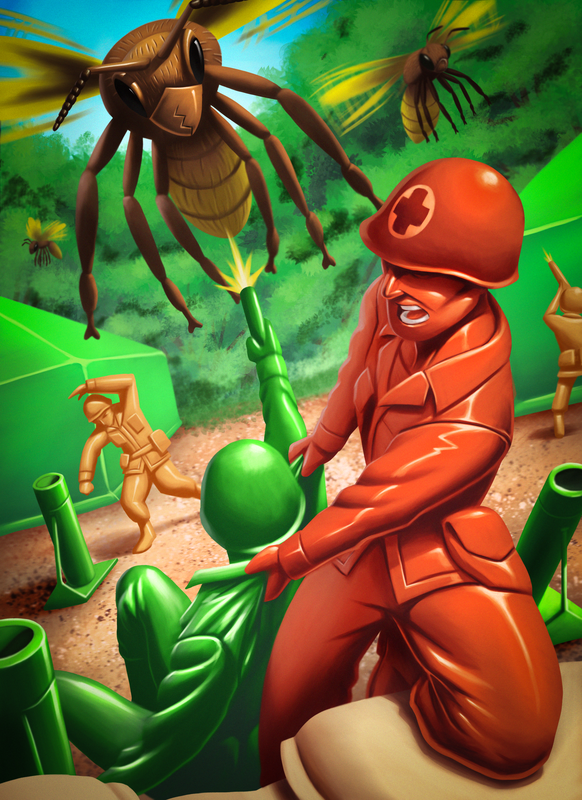
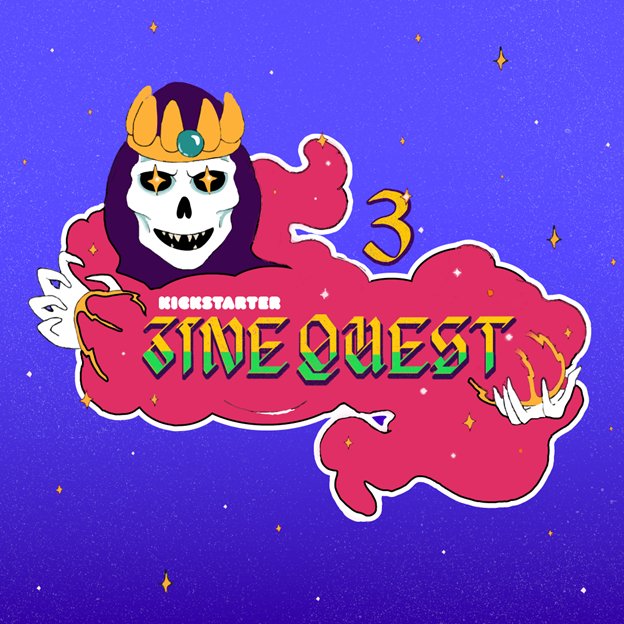
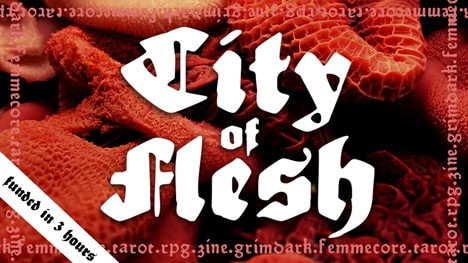
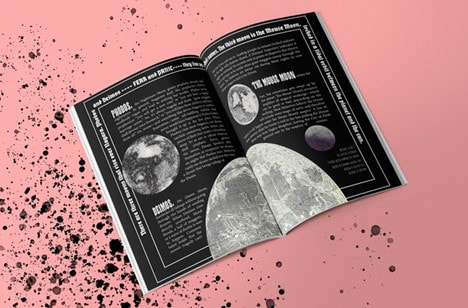
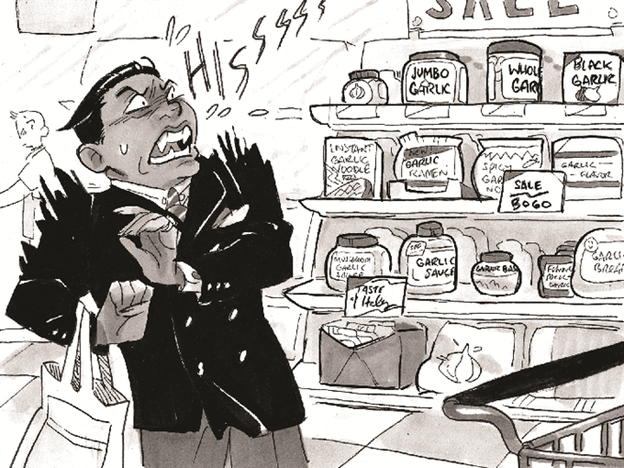
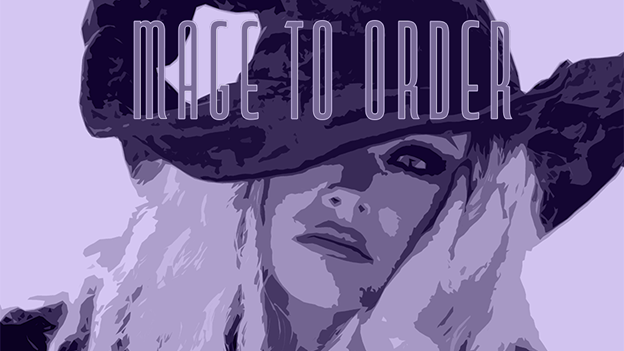
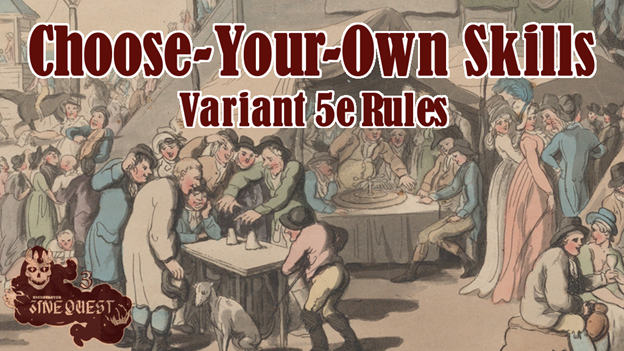
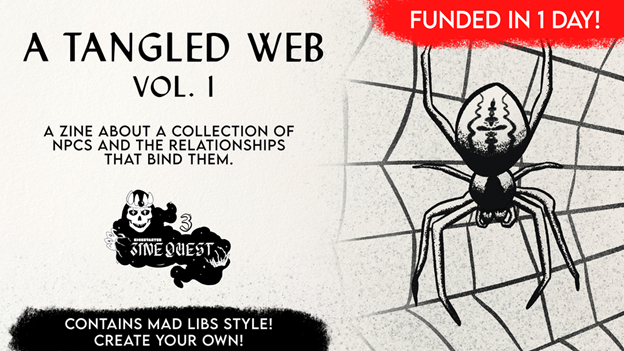
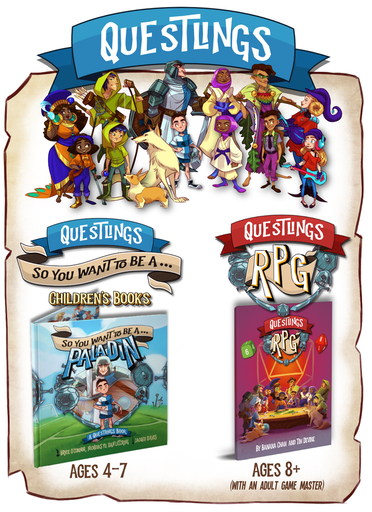
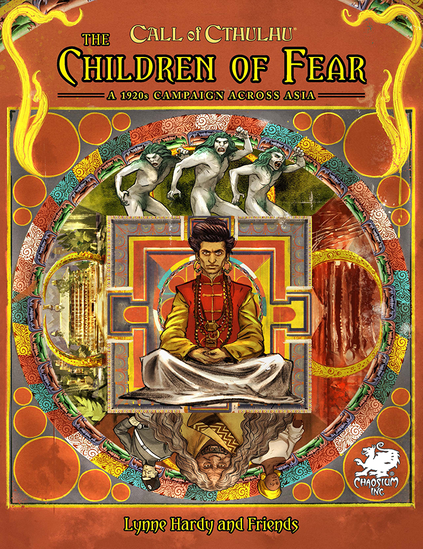
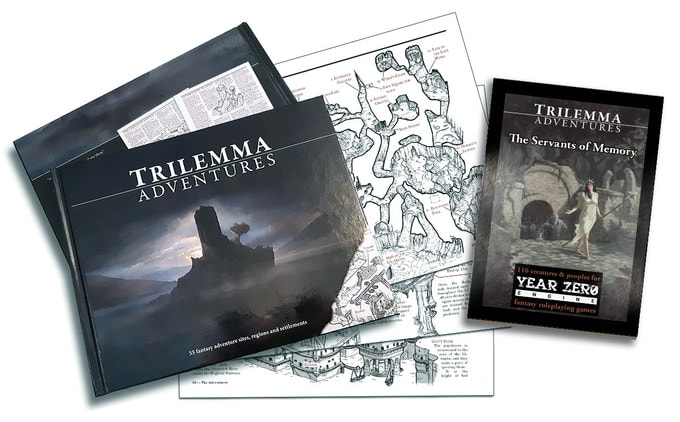
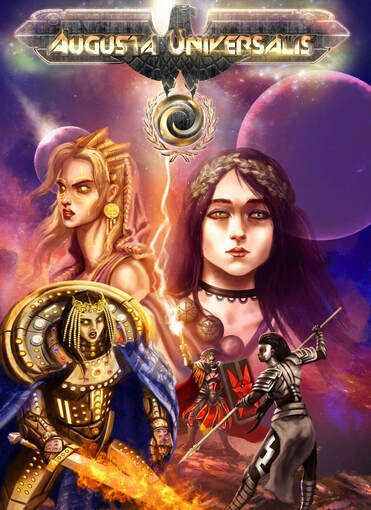
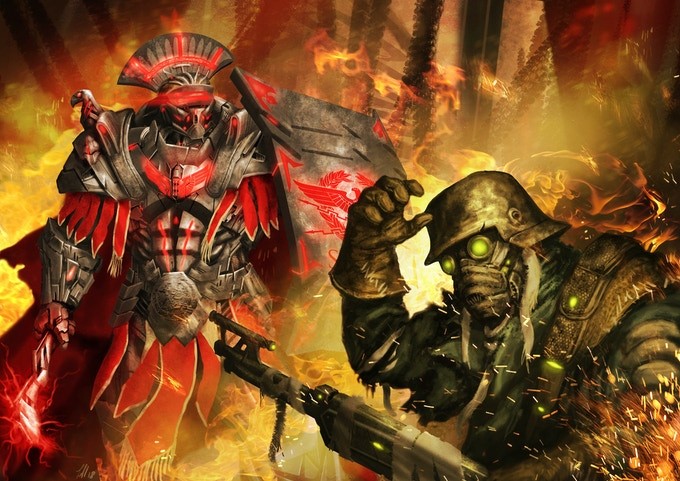
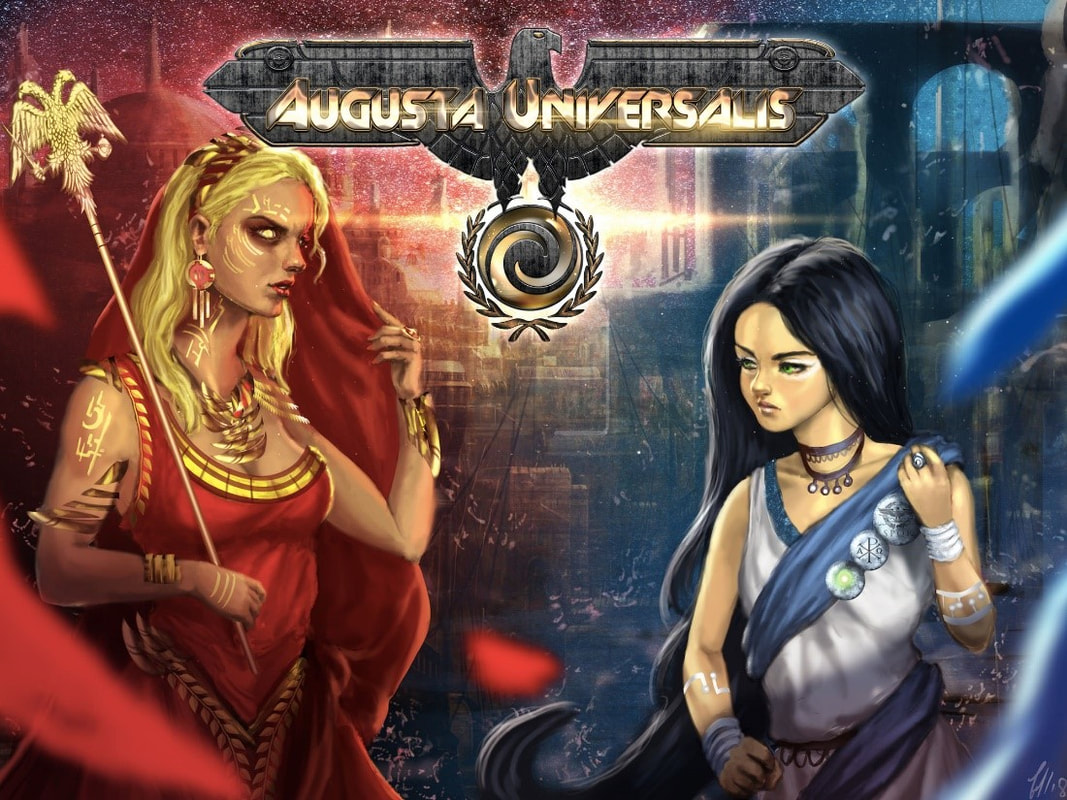
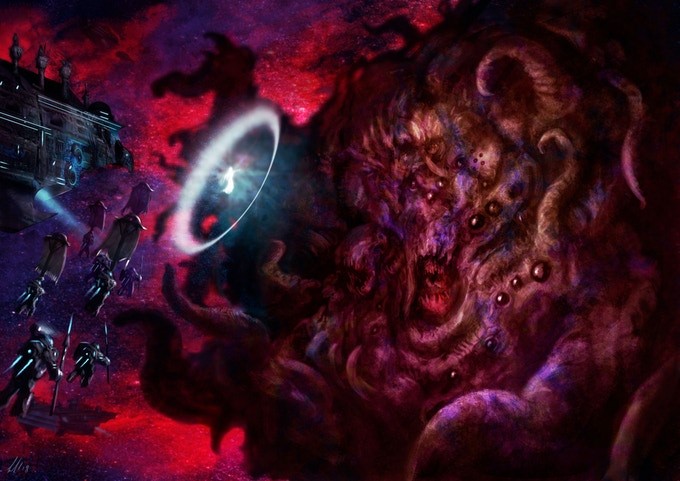
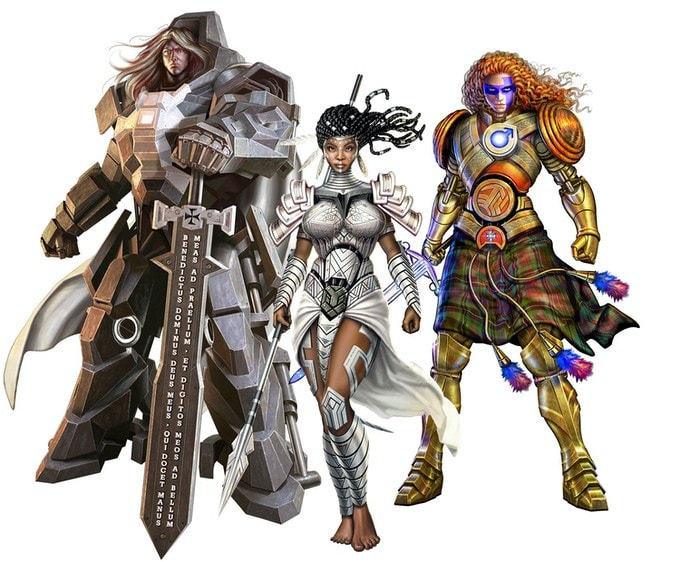
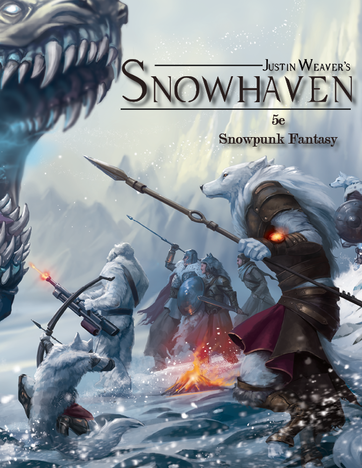
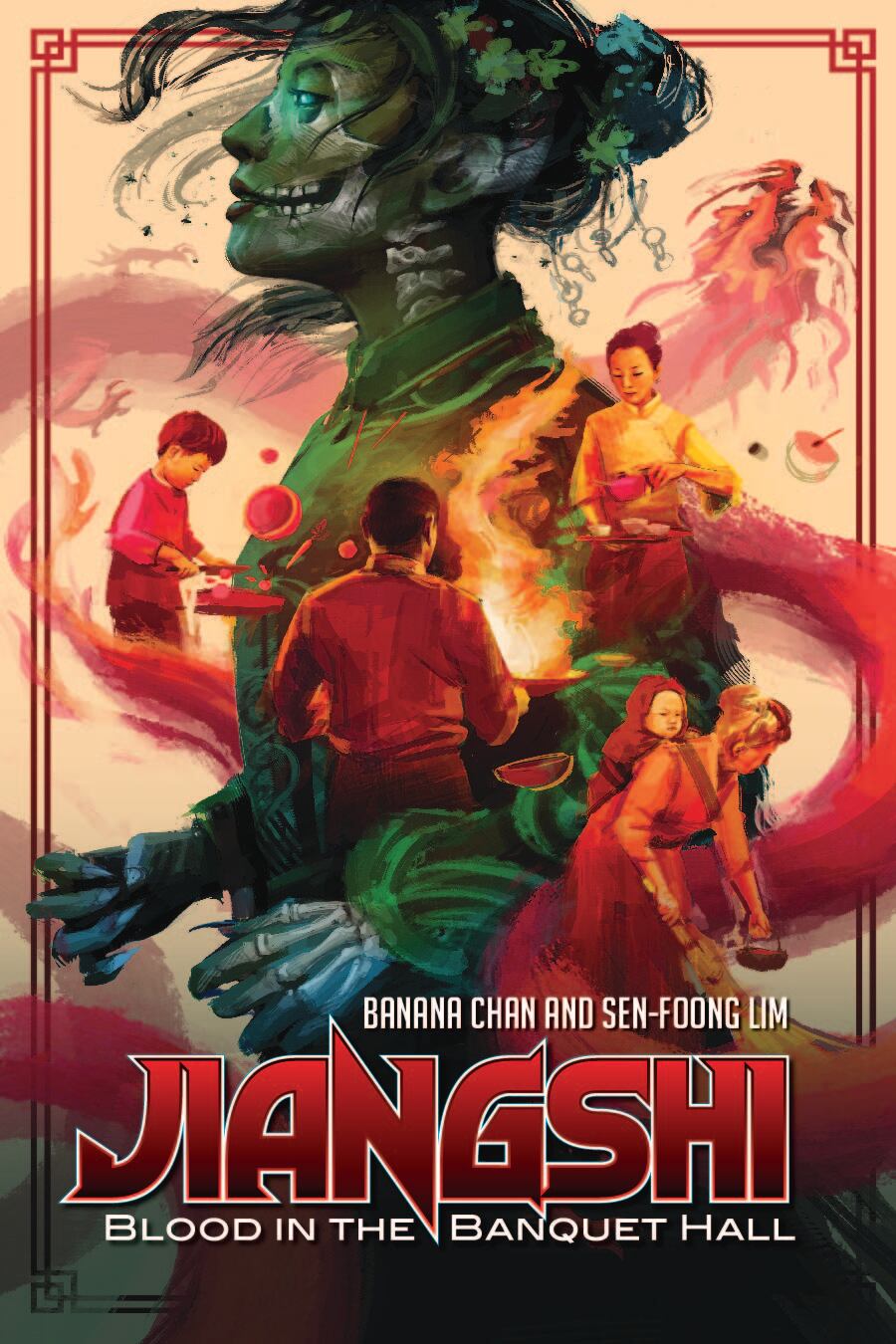
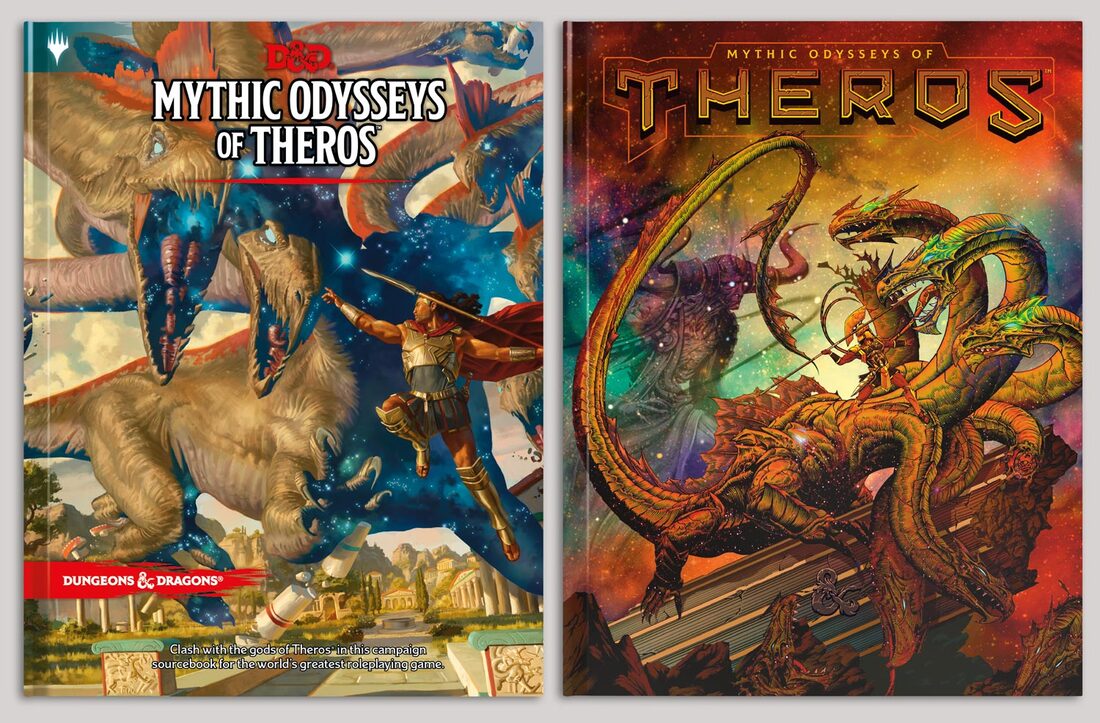
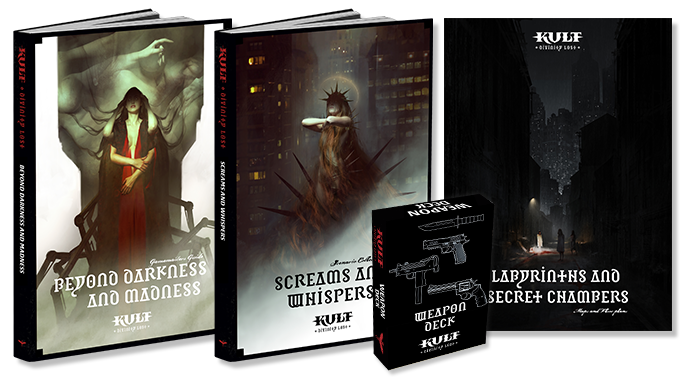
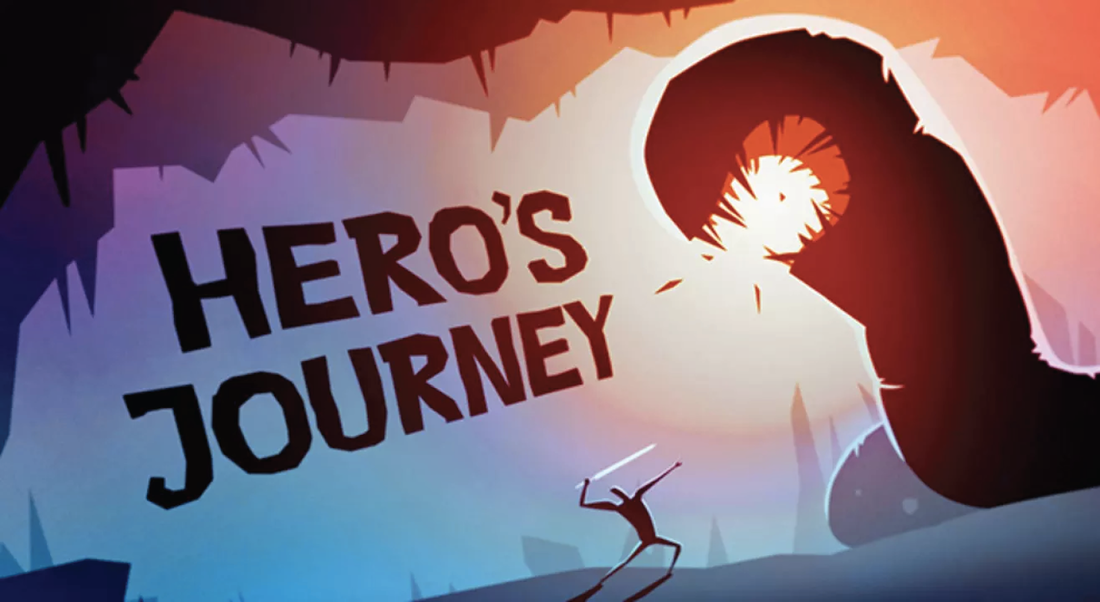

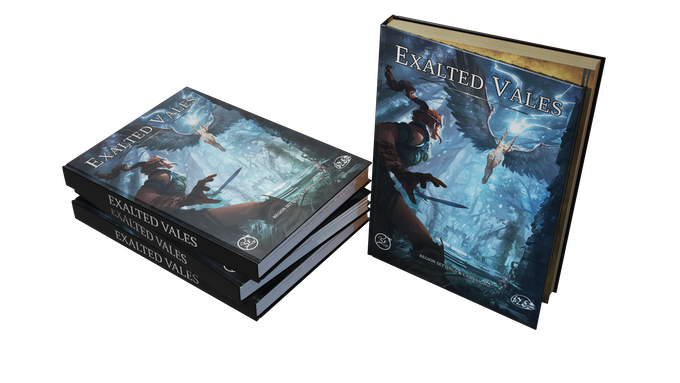
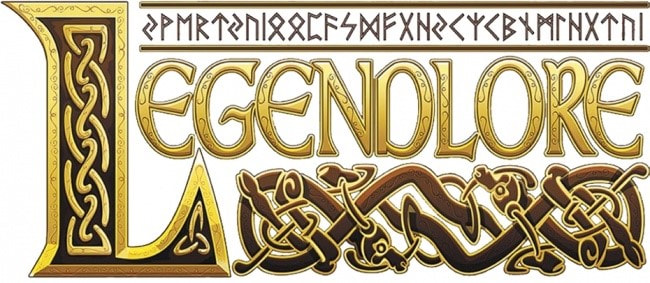

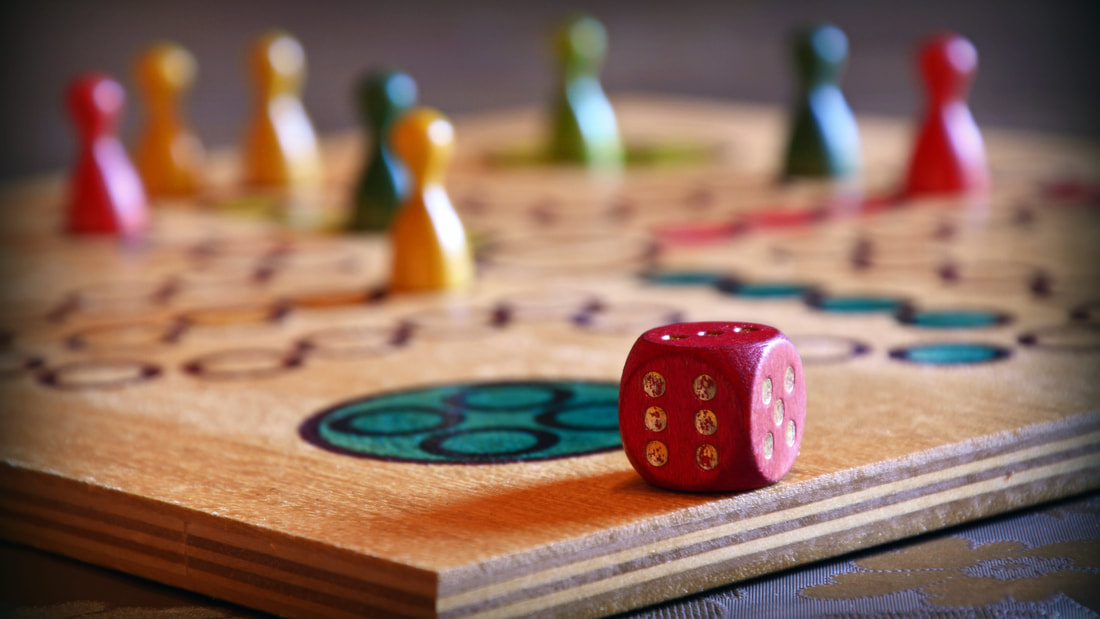
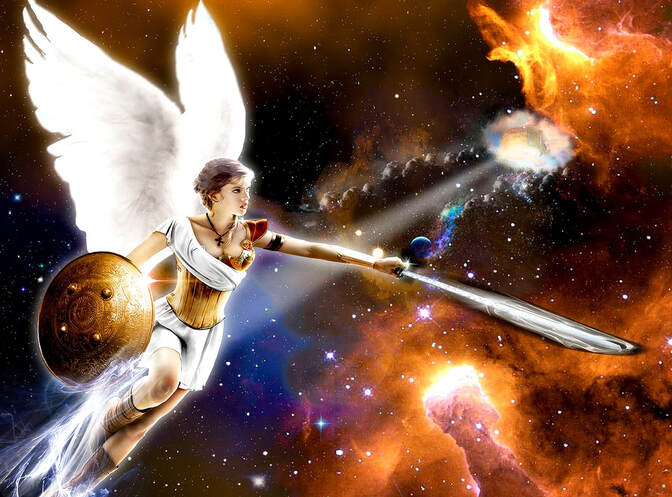



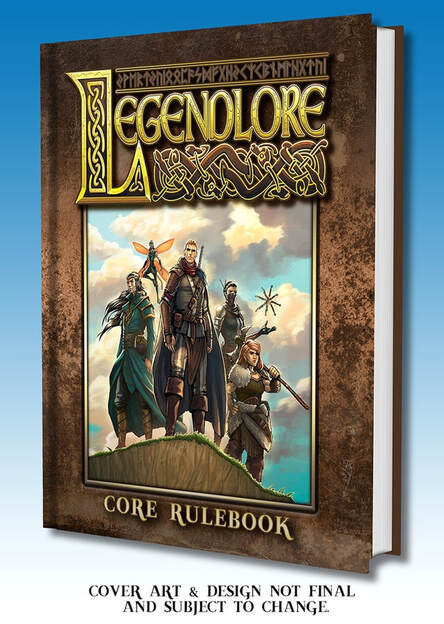
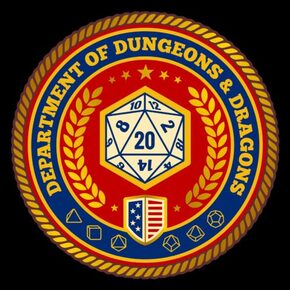
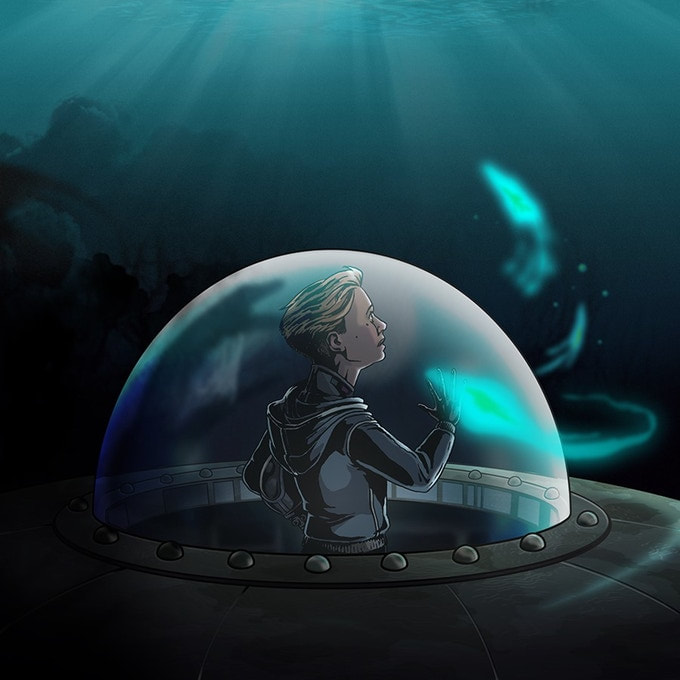
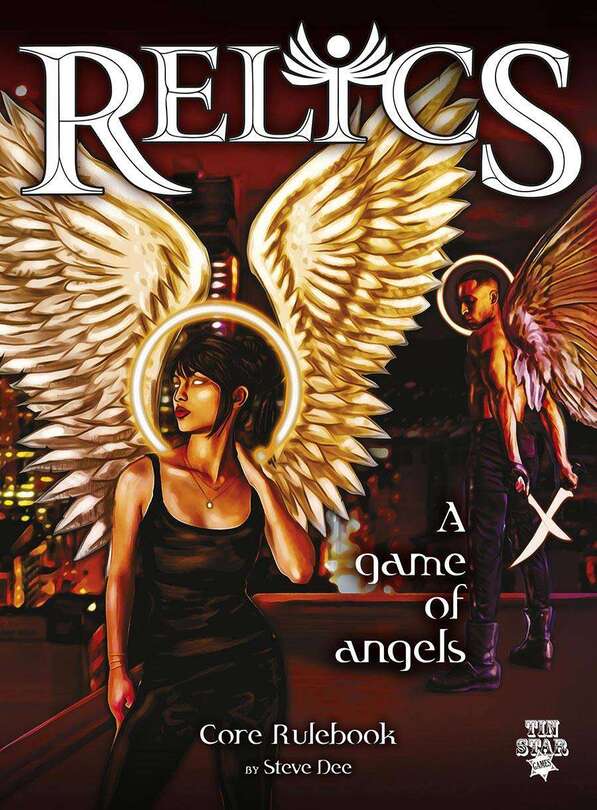
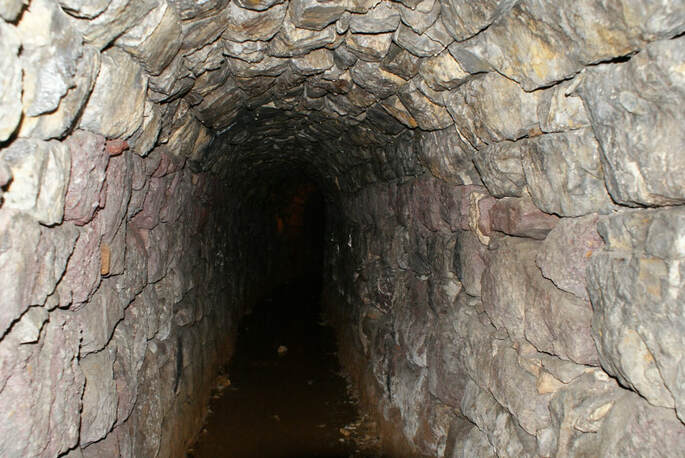



 RSS Feed
RSS Feed